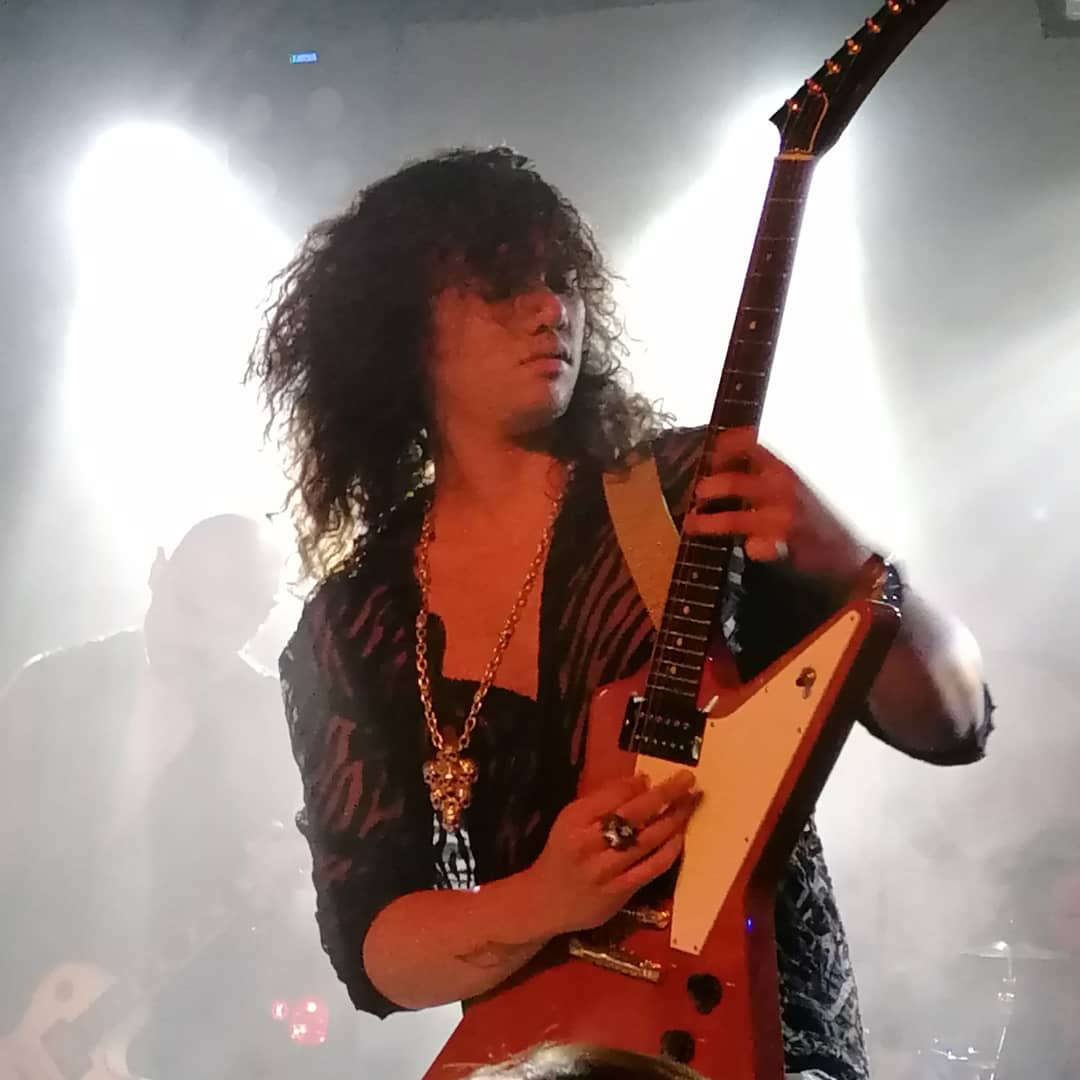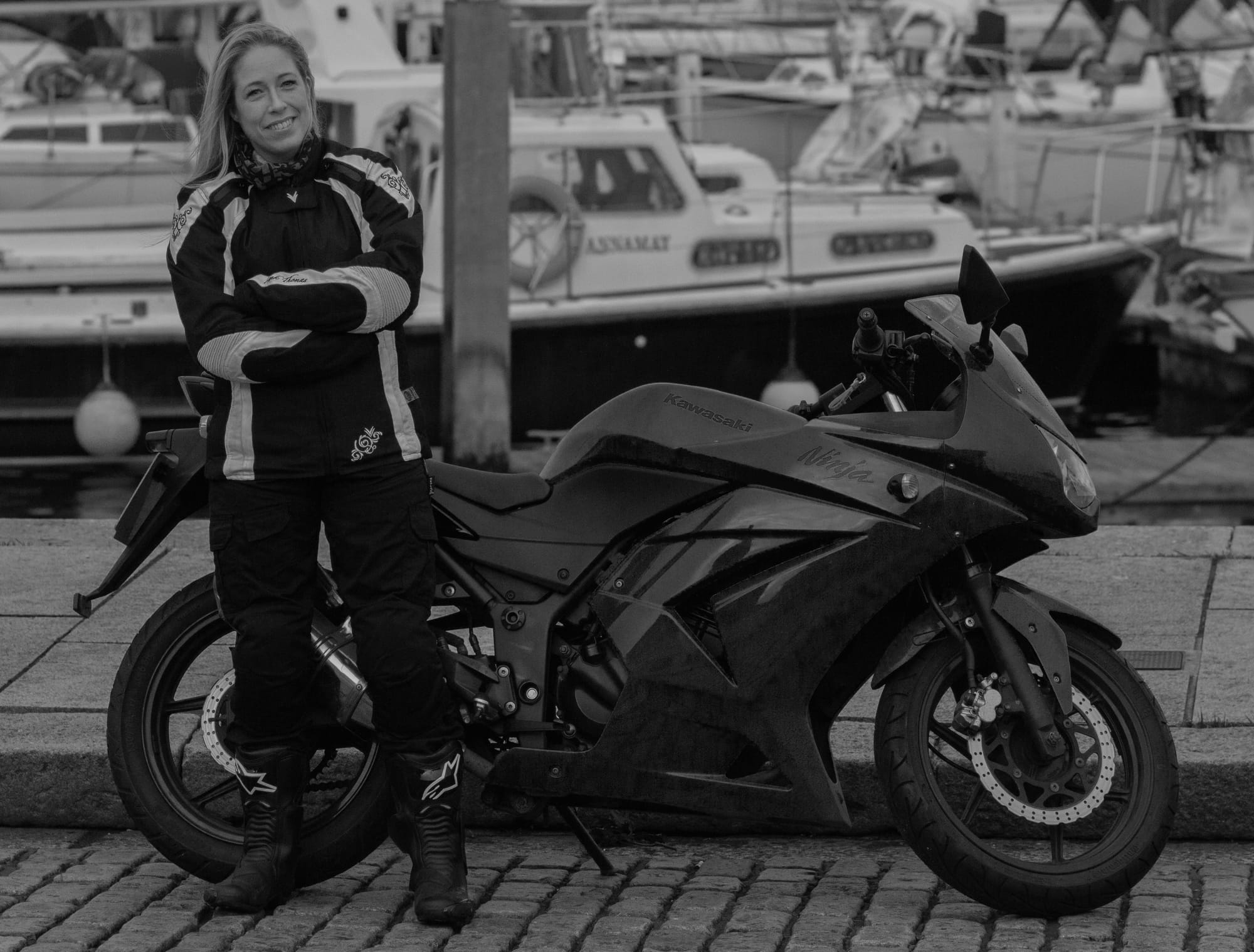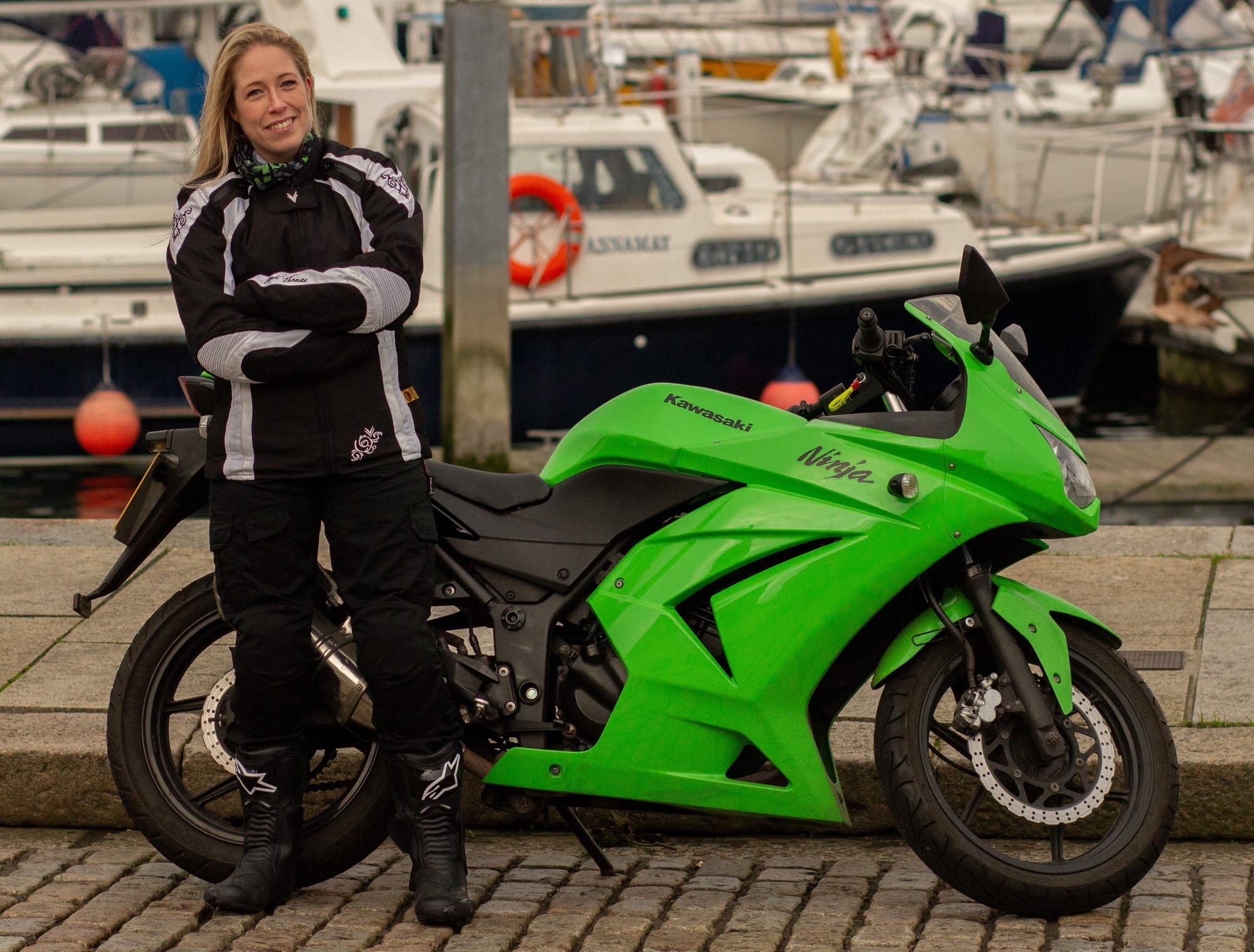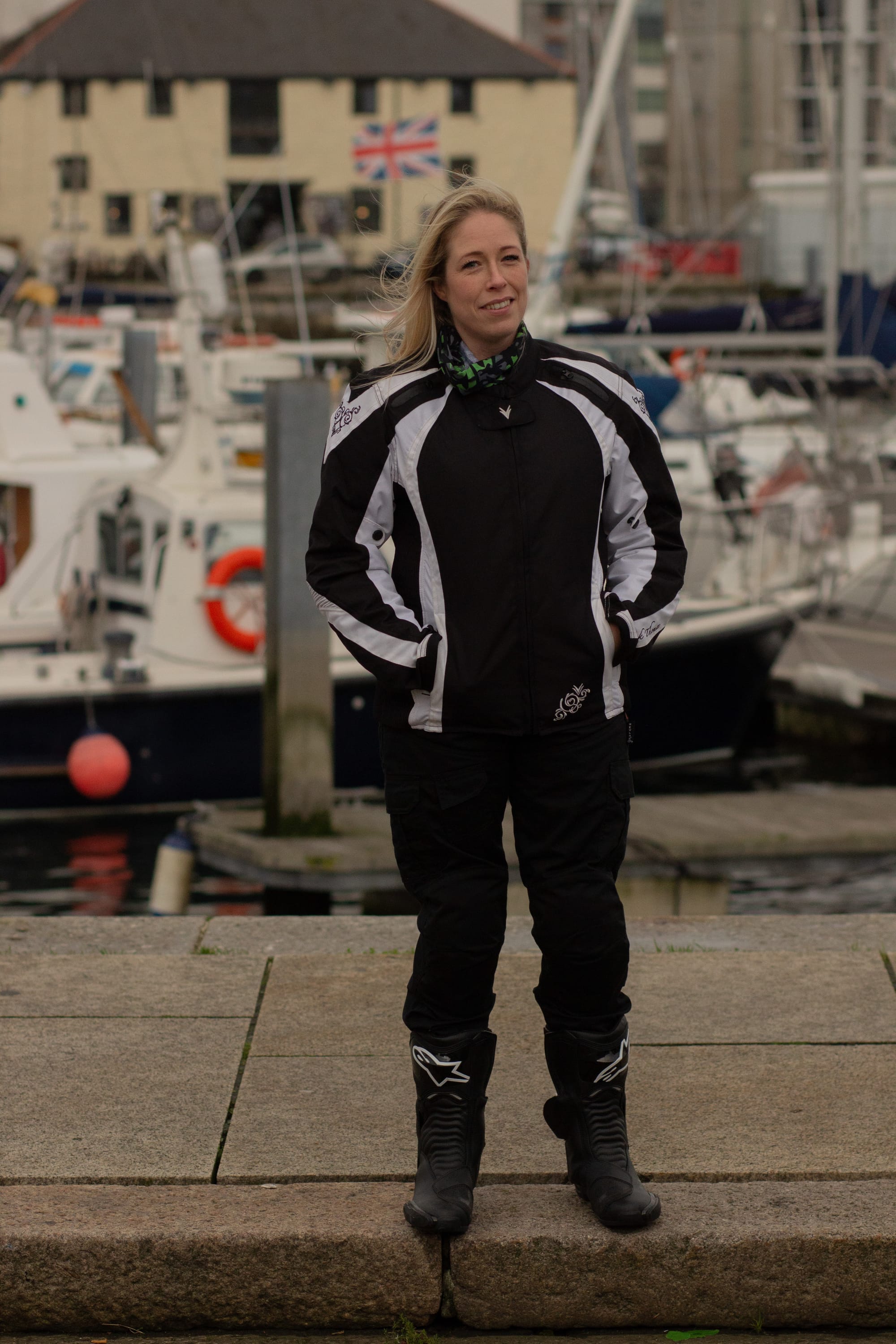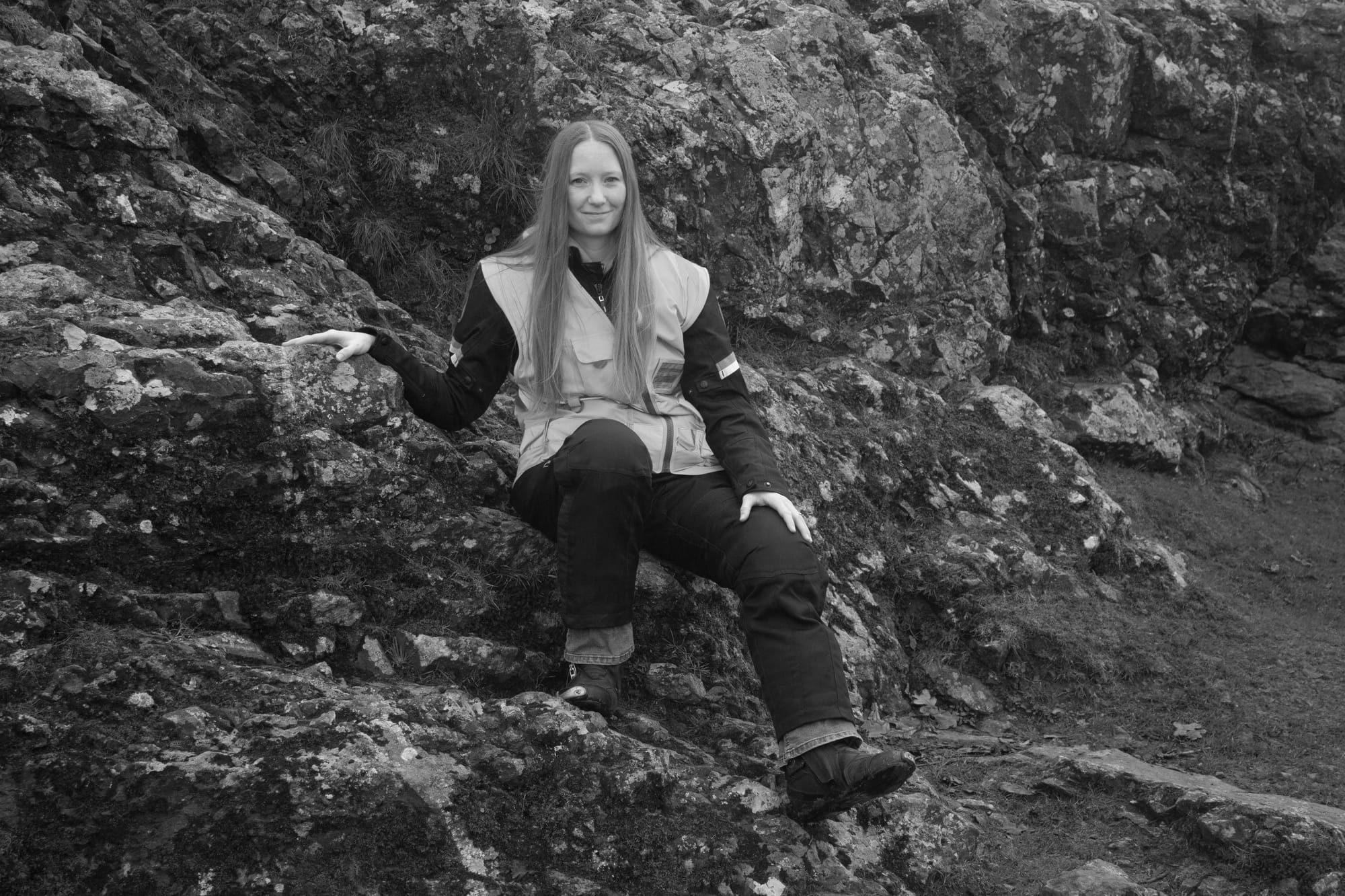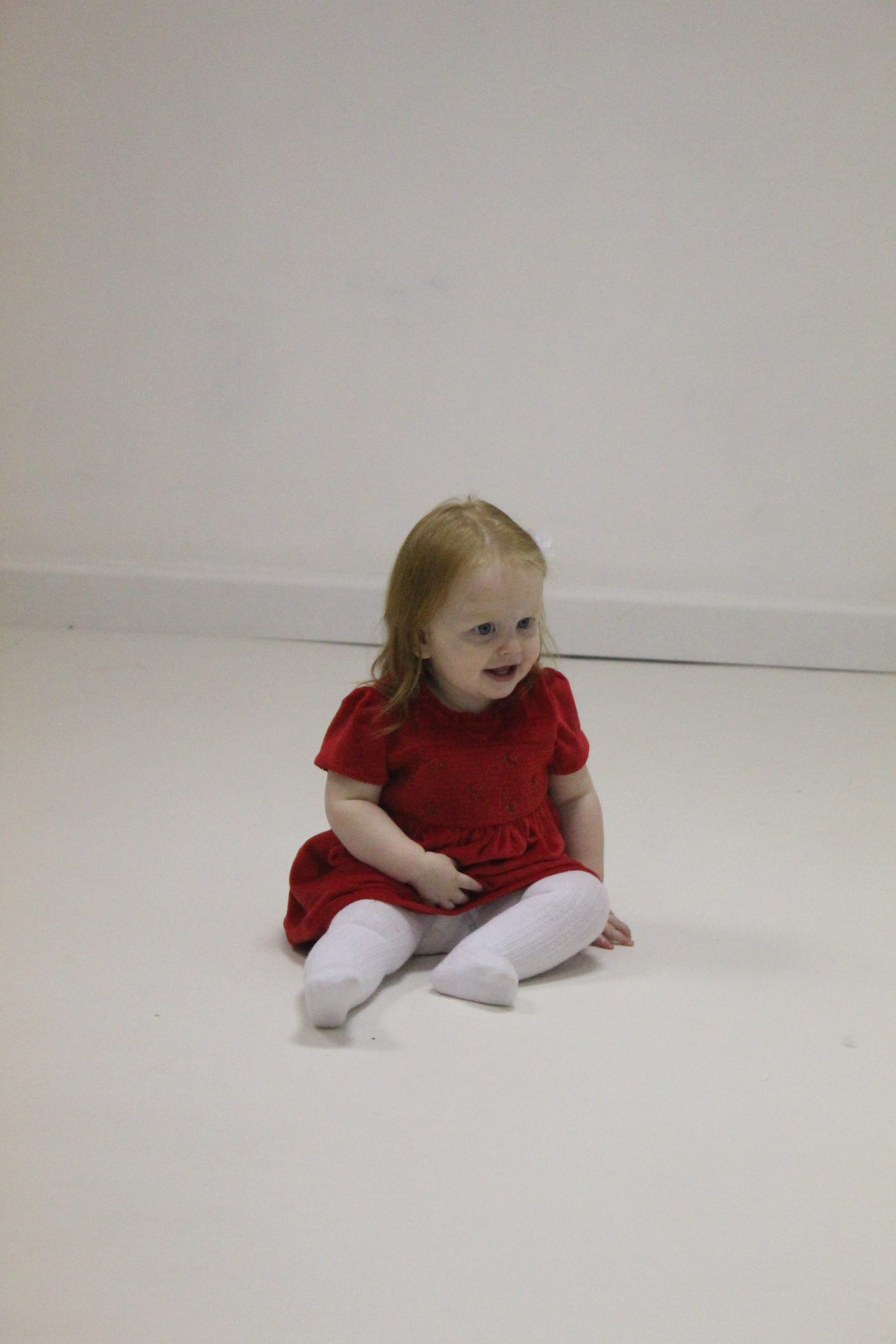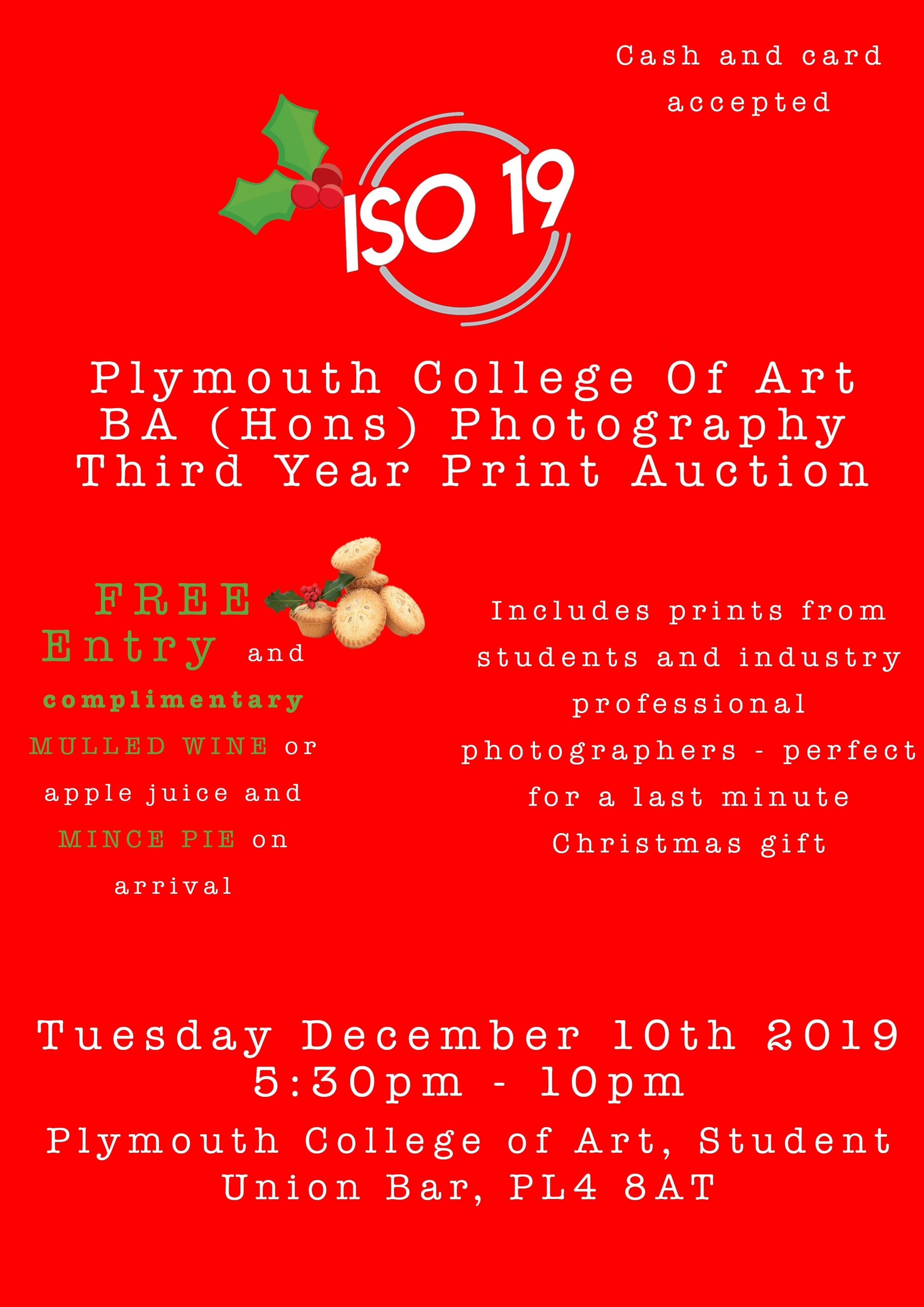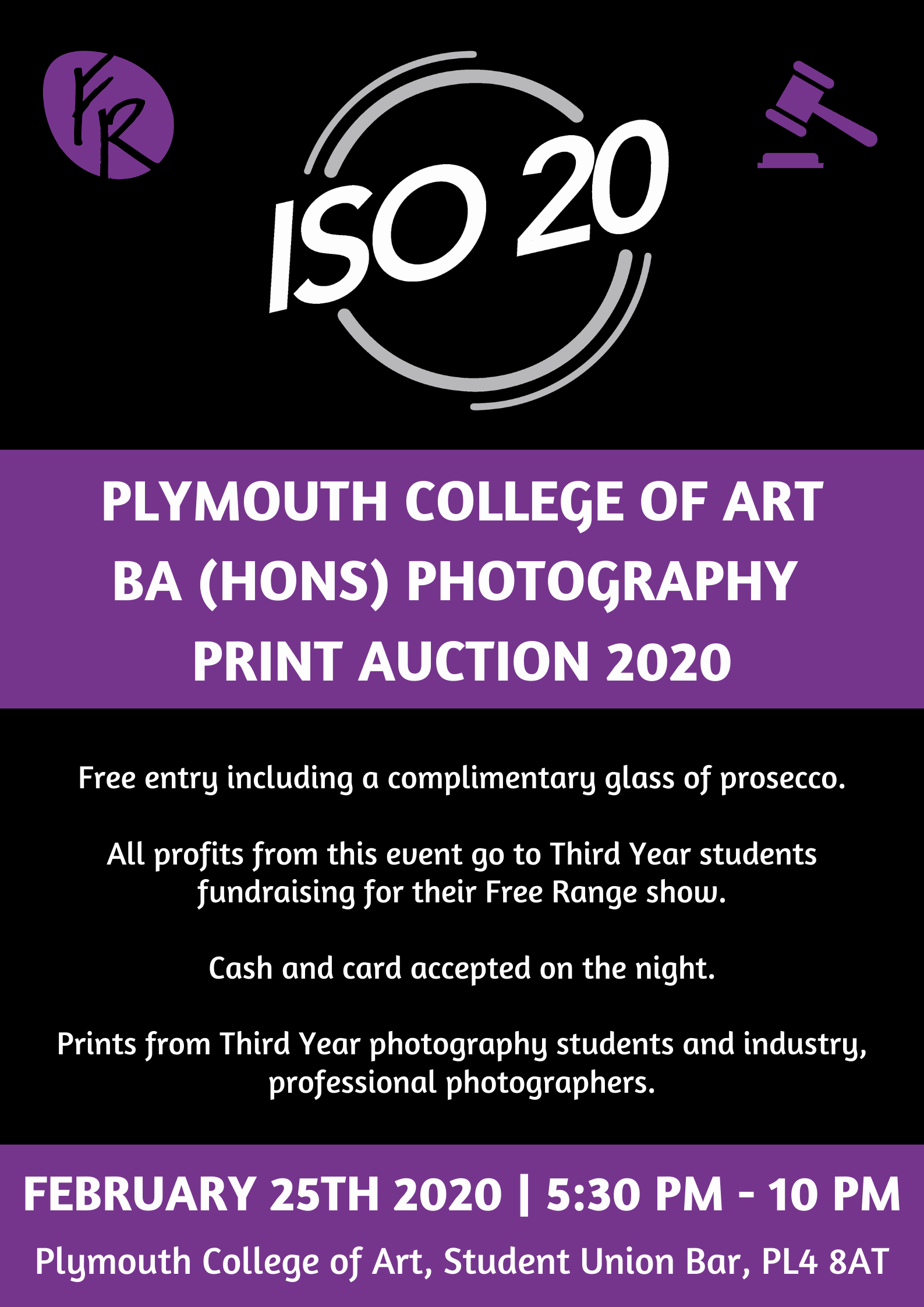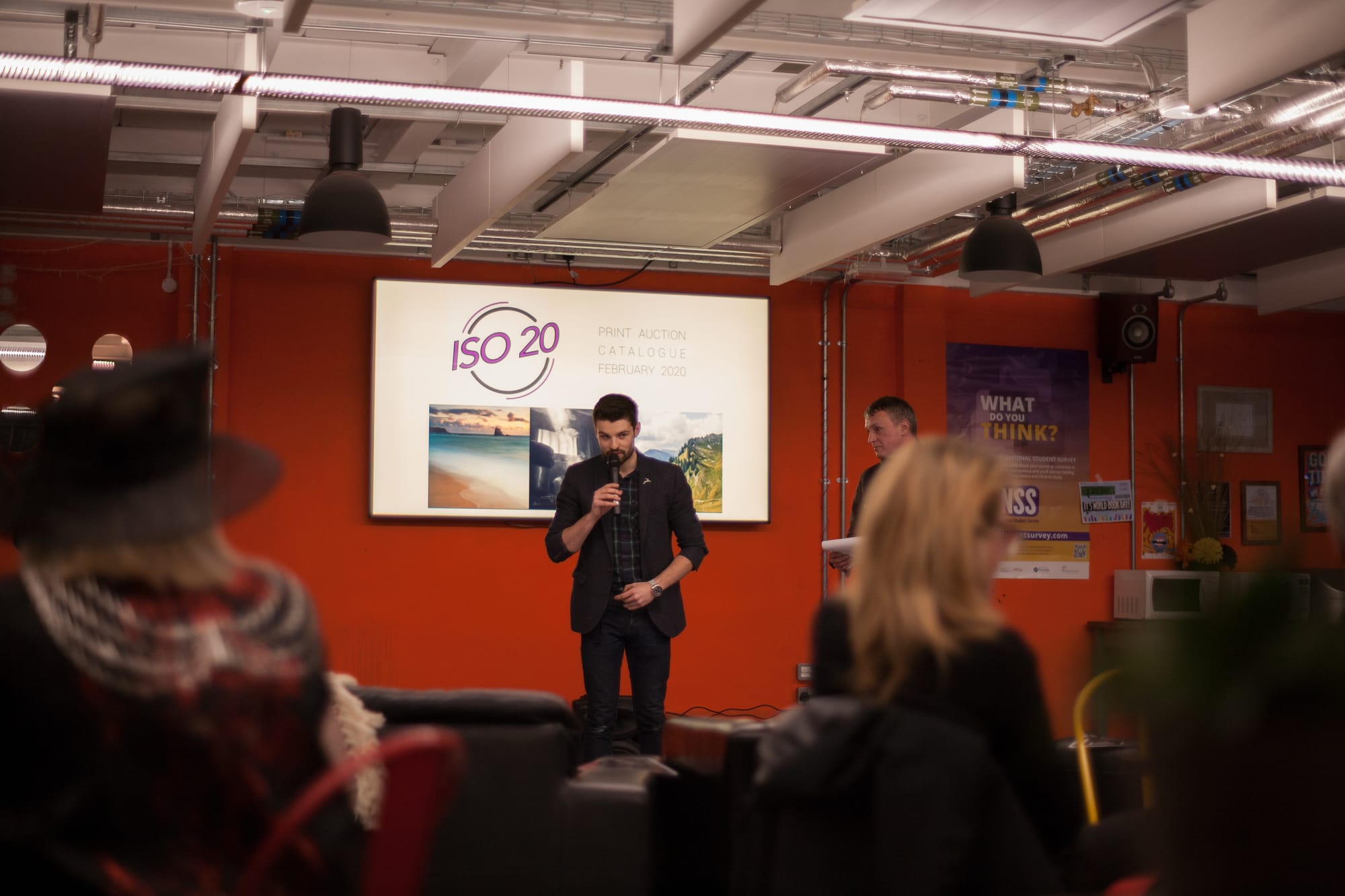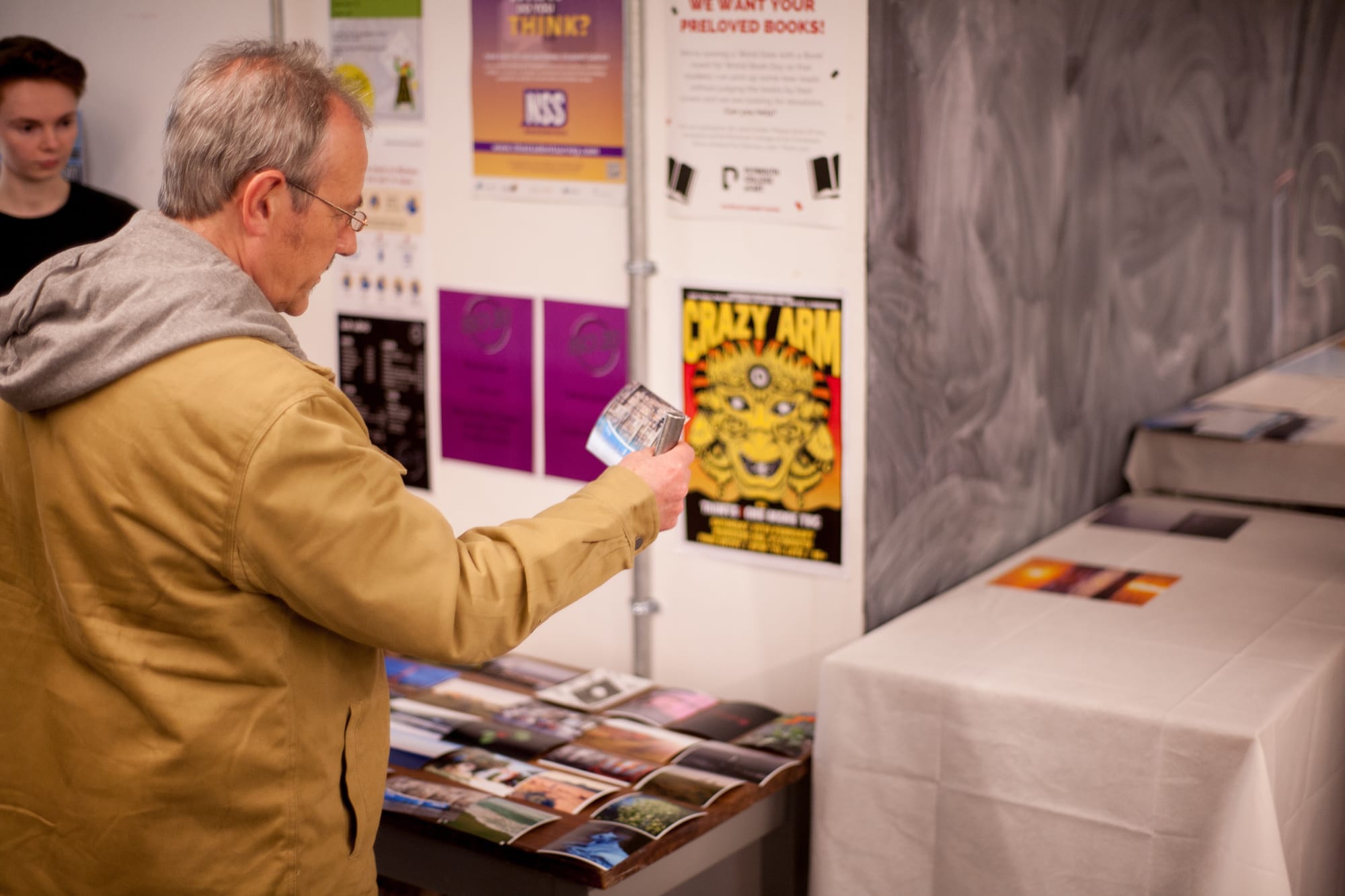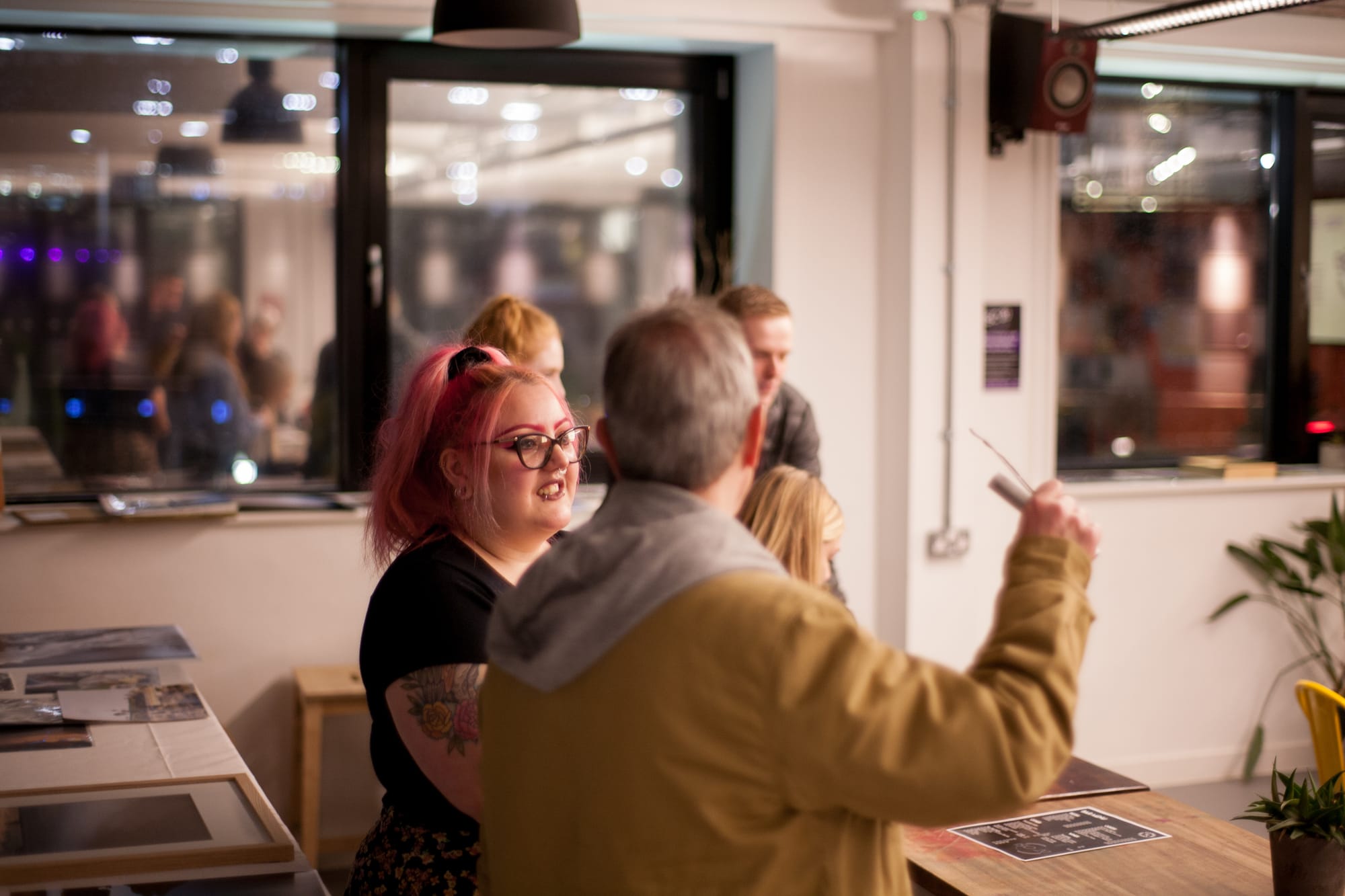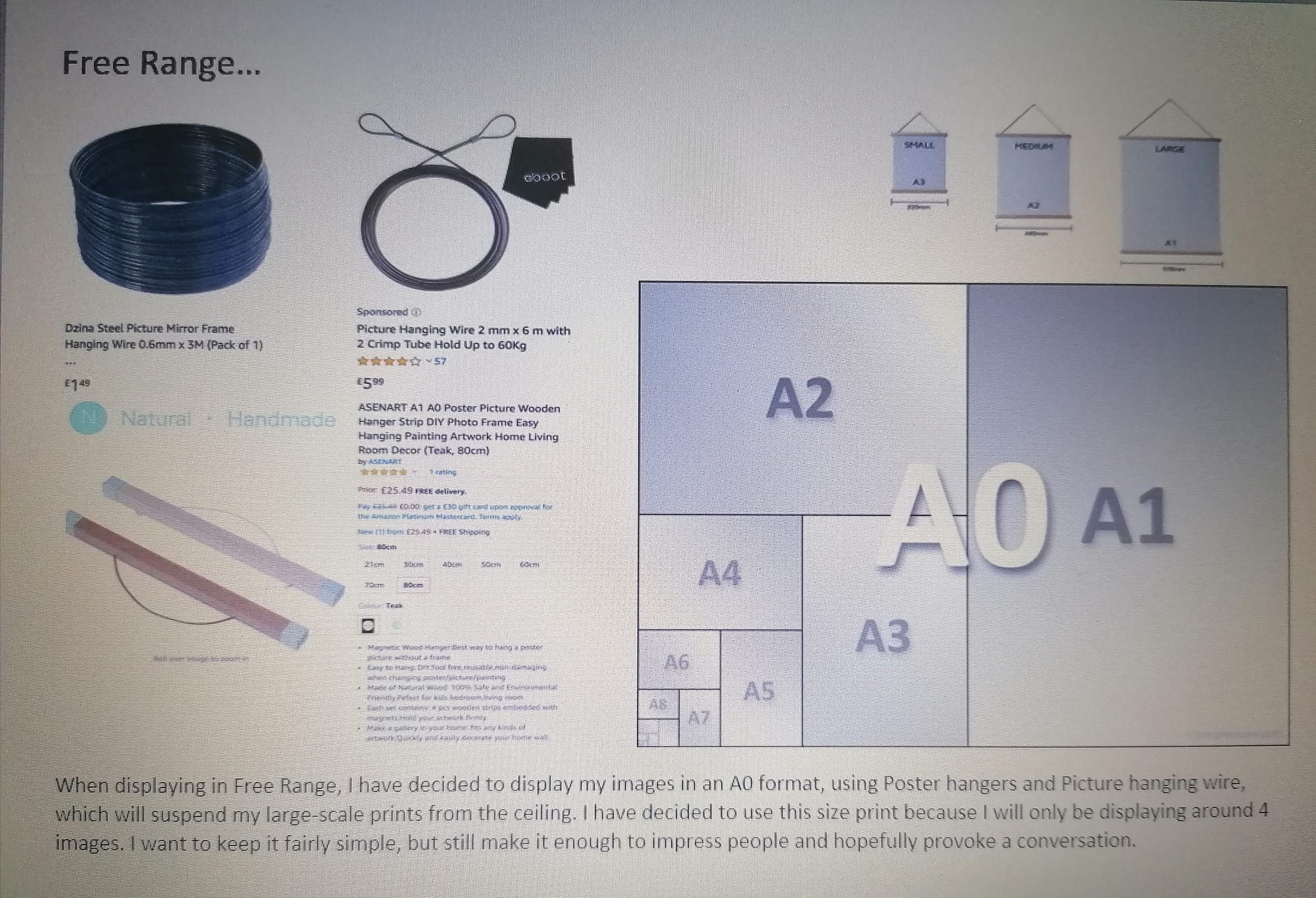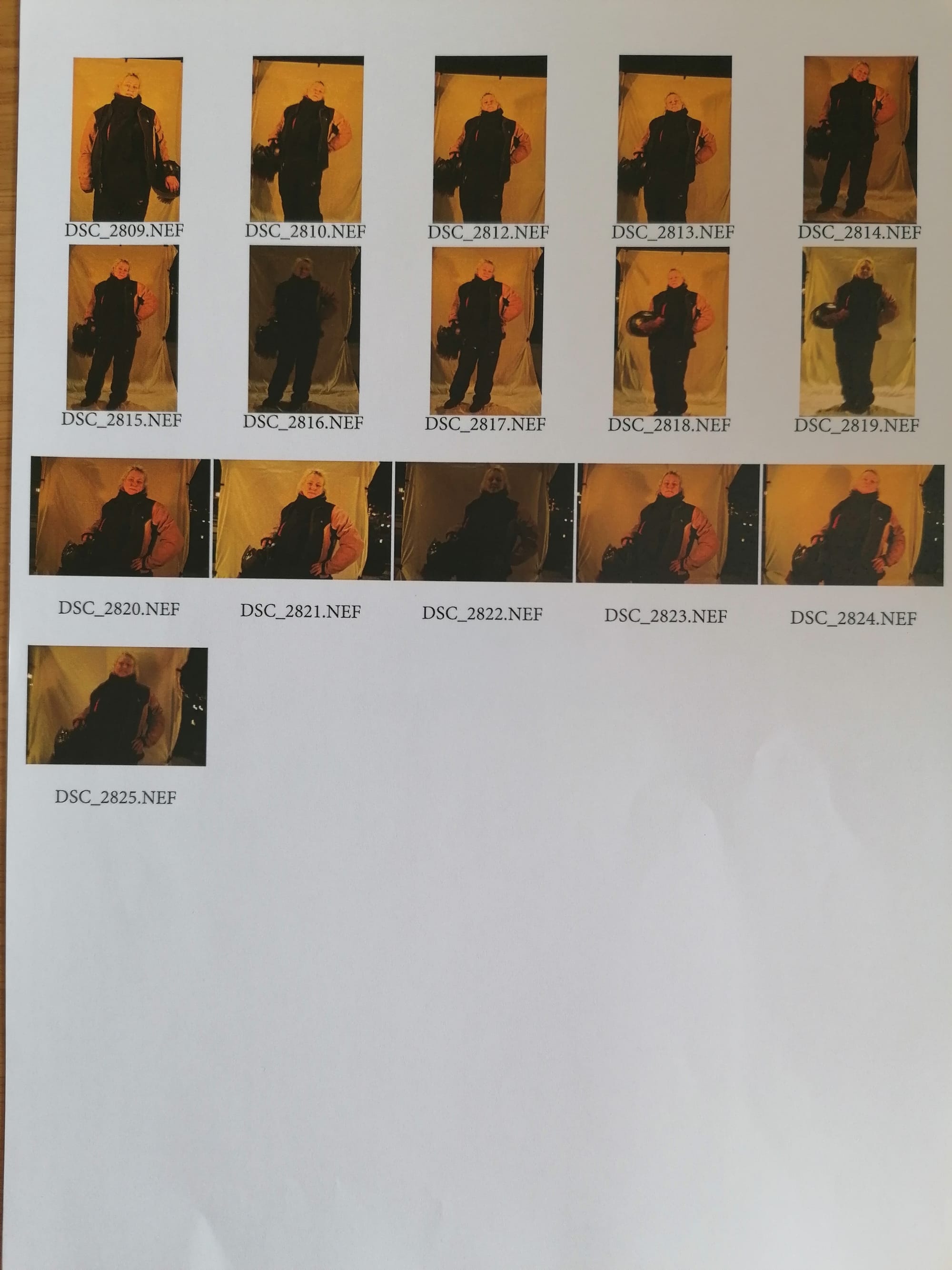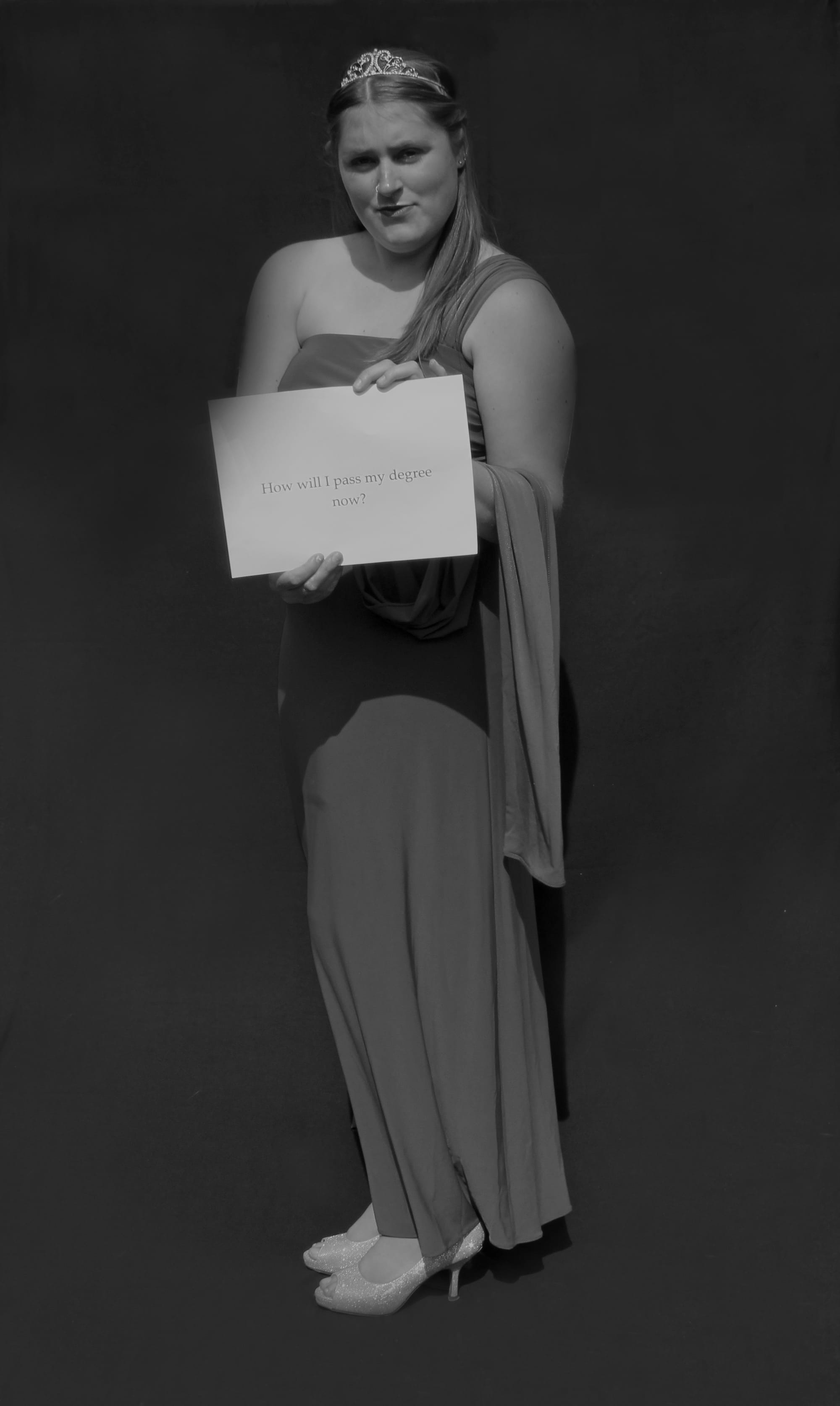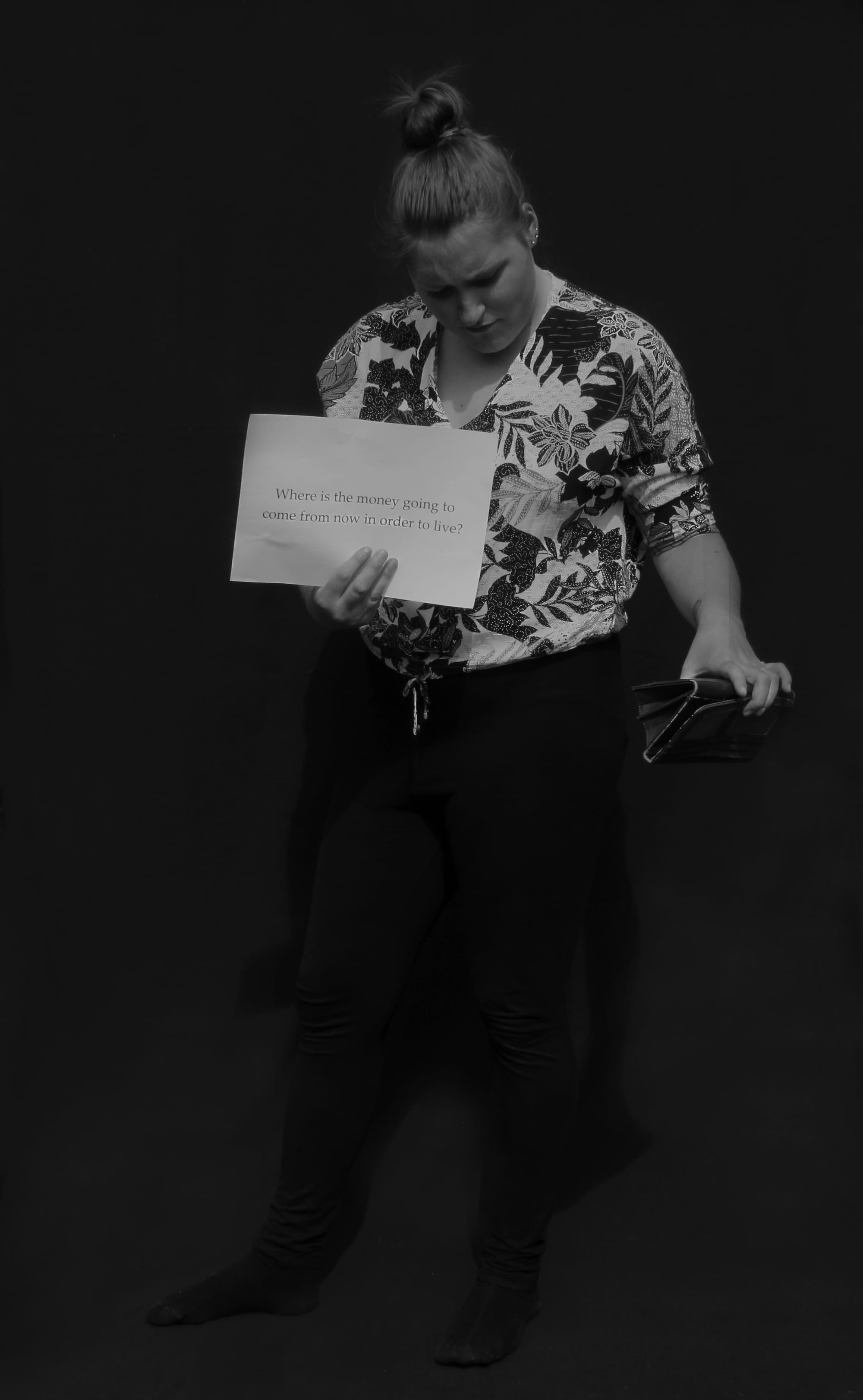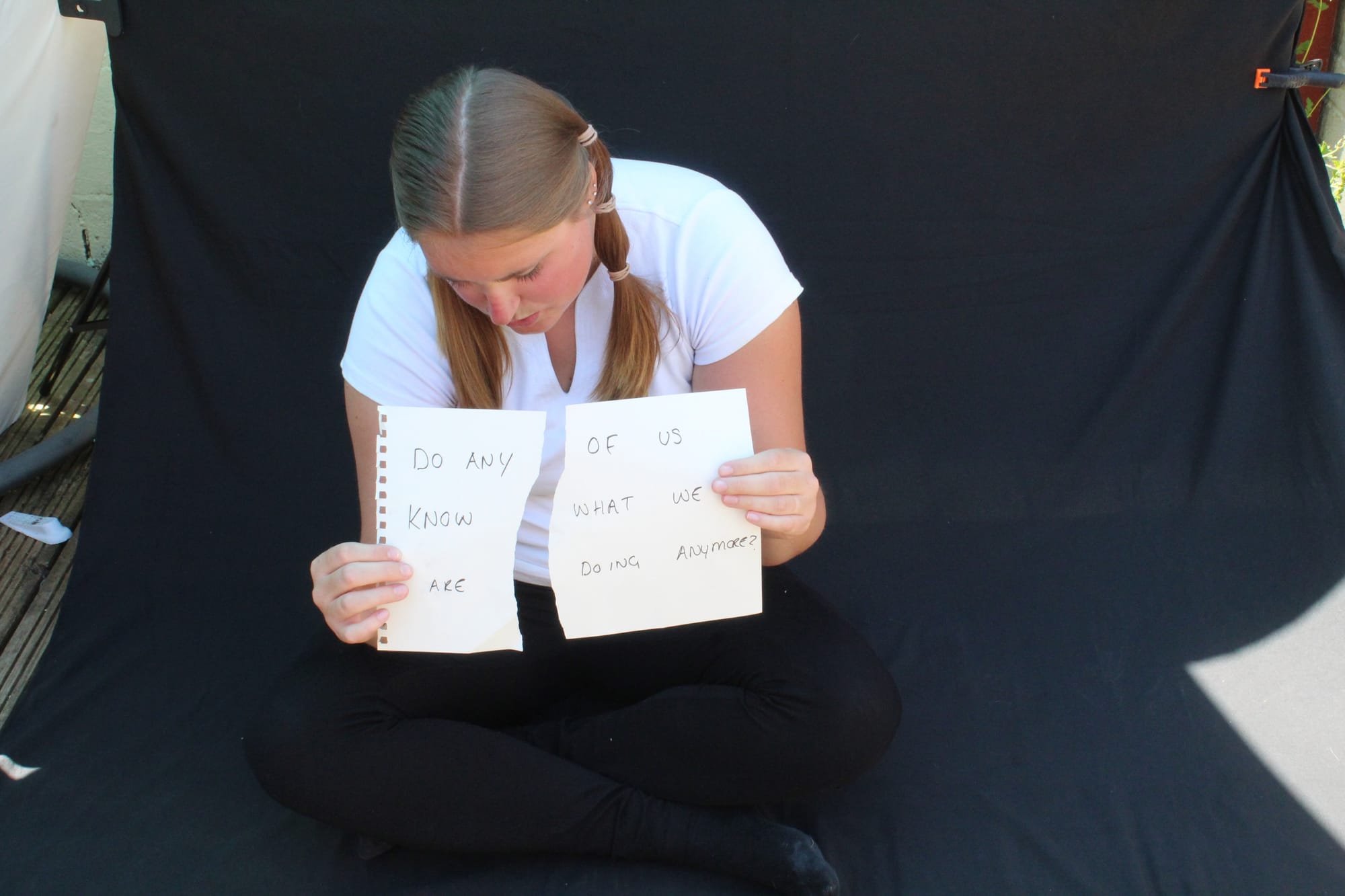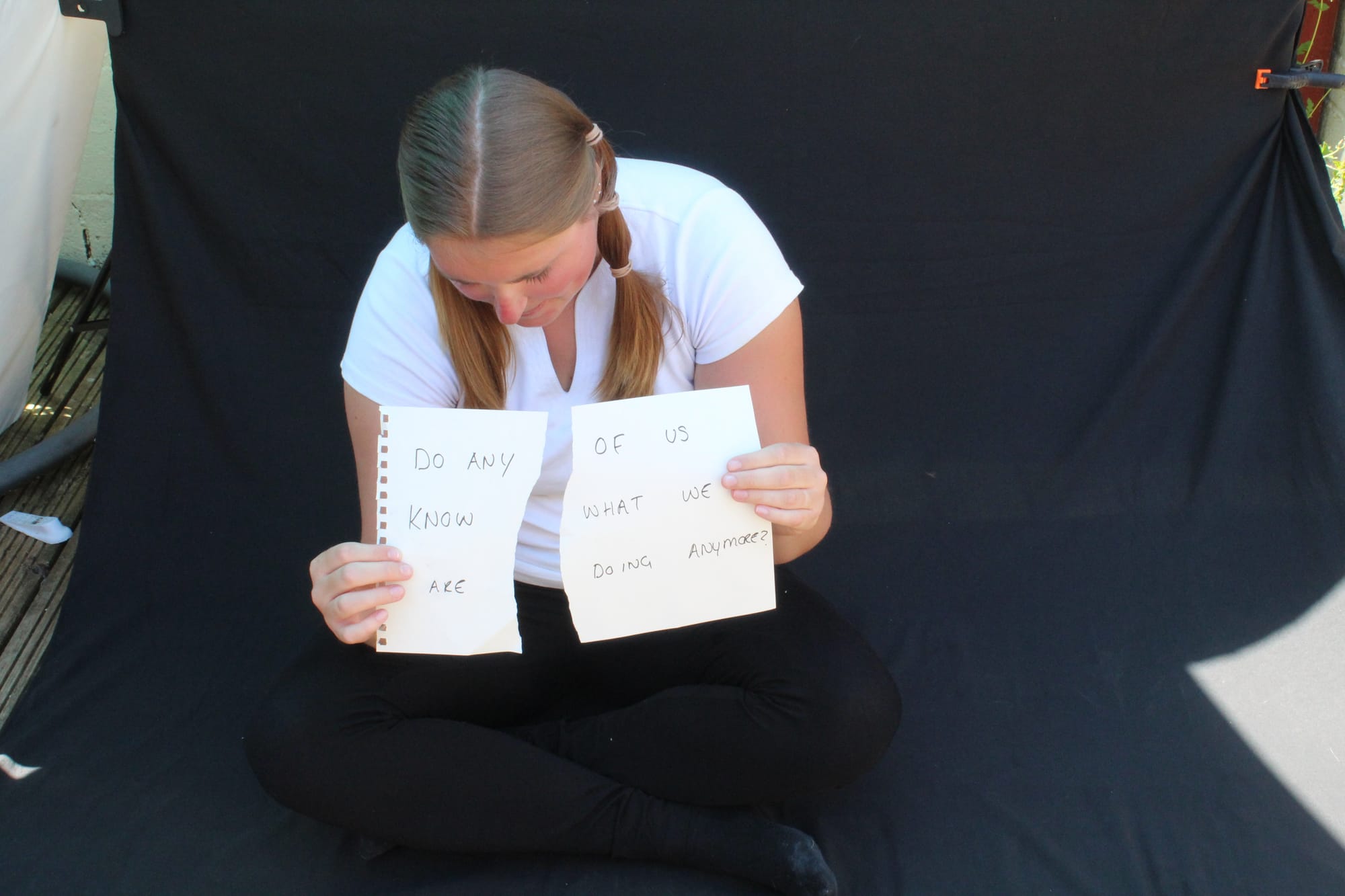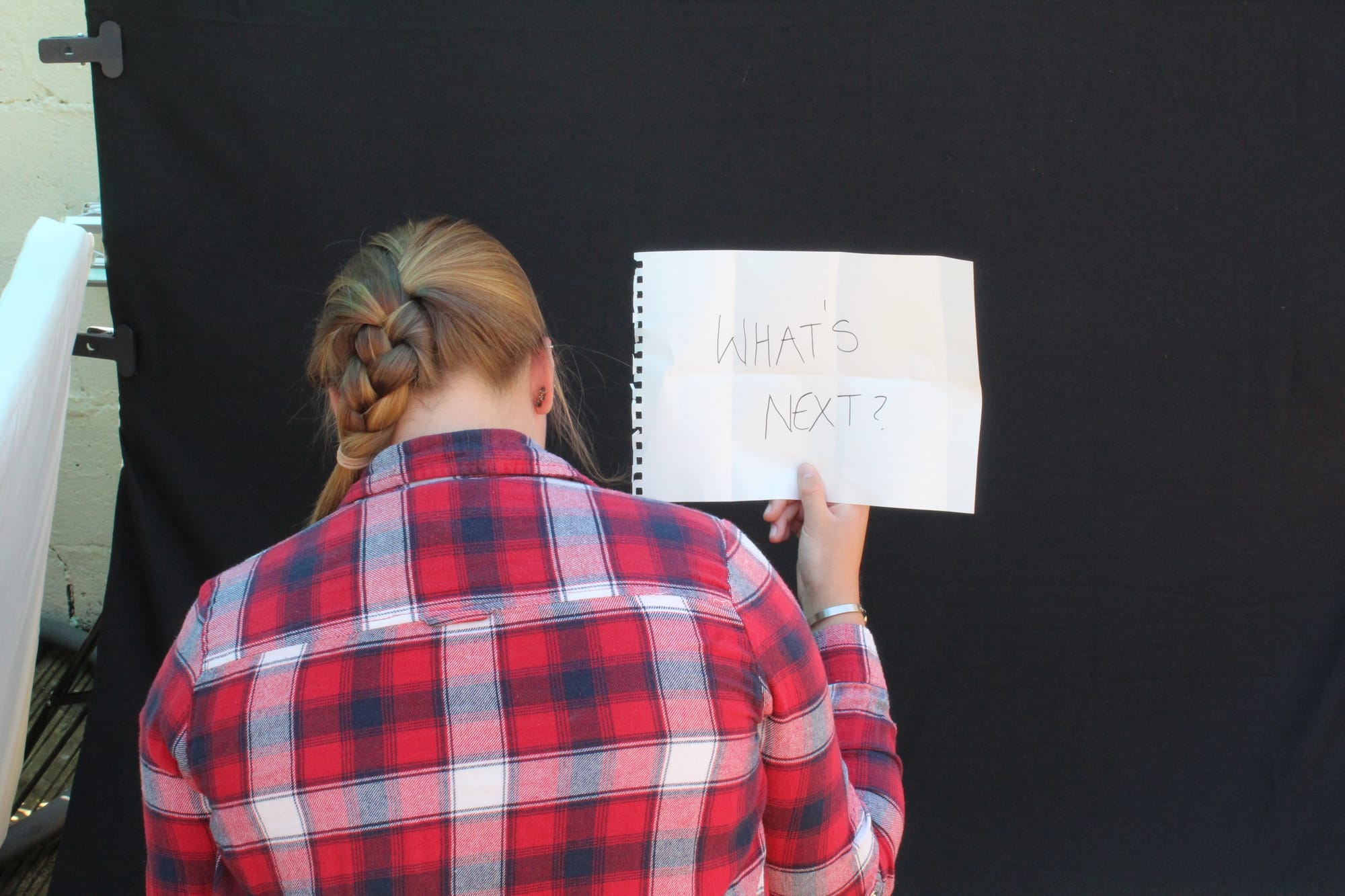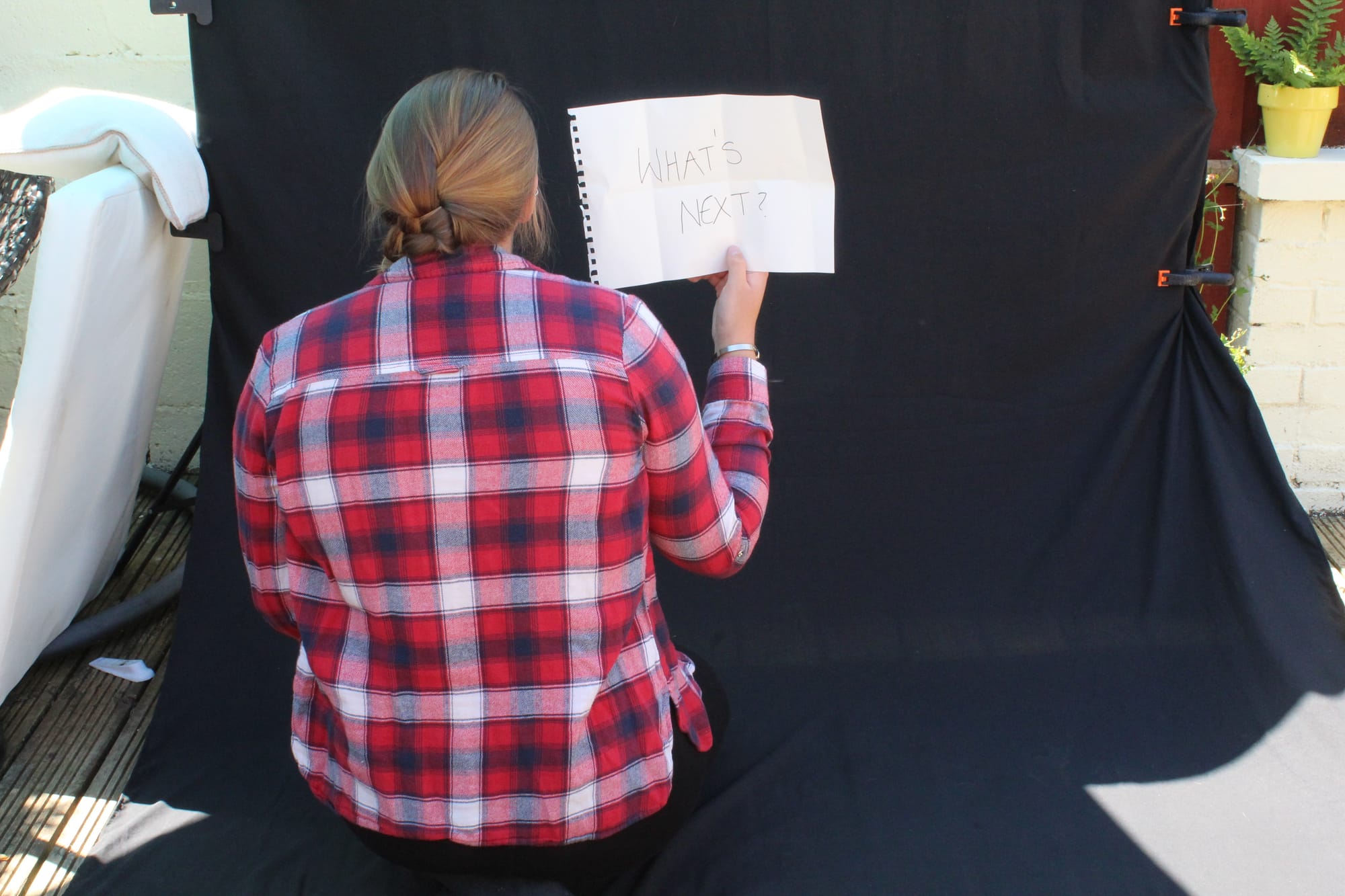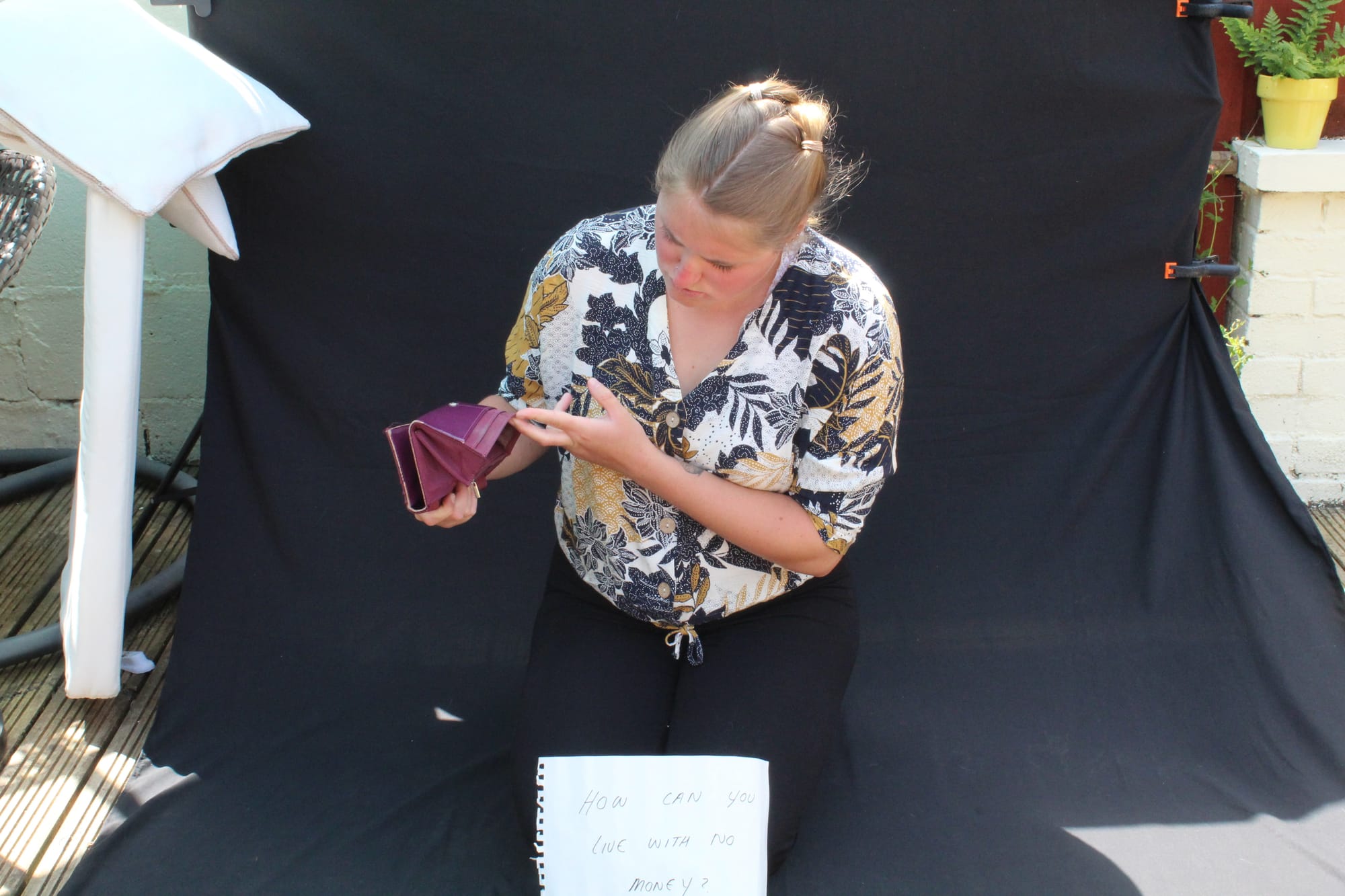Jasminealexphotography
“What i like about photographs is that they capture a moment that’s gone forever, impossible to reproduce.” - Unknown artist
About myself as an artist
Hello, my name is Jasmine. I am an emerging photography, currently studying my third and final year of my degree at the Plymouth College of art.
I specialise in Landscape photographer; including nature and wildlife, the thing I love the most about this type of photography is how natural it is, it is very rarely staged. I feel that working in natural spaces; whether photographing objects, places or people can help to add to the beauty of the 'thing' being photographed and potentially create more visually pleasing images.
What with being in the final year of my degree, I felt that this was the perfect opportunity to try something different; something which I have not done a great deal of before. So this year I will be working on Portrait photography. This is something that I am really interested in working with and is something that I will be looking to use within my free range show at the end of my degree in June 2020.
I specialise in Landscape photographer; including nature and wildlife, the thing I love the most about this type of photography is how natural it is, it is very rarely staged. I feel that working in natural spaces; whether photographing objects, places or people can help to add to the beauty of the 'thing' being photographed and potentially create more visually pleasing images.
What with being in the final year of my degree, I felt that this was the perfect opportunity to try something different; something which I have not done a great deal of before. So this year I will be working on Portrait photography. This is something that I am really interested in working with and is something that I will be looking to use within my free range show at the end of my degree in June 2020.

Contact
The first roll of film
First test shoot- (Illford 2 film- ISO 400) – In the film studio, using the main room light
I decided to carry out this shoot using film, as I have not used film since, I was in the first year of my degree and during my final year of my degree I decided to buy my own medium format film camera. There is something about film that I am really drawn to, probably for the fact that it encourages you to take your time when photographing your subjects. For this shoot I was using my friends Rose and Megan as the models. Although this was only a test shoot, I was really pleased with the images. Obviously technically there are some areas that I would need to work on, including the lighting/exposure and also working on making sure that the camera is fully in focus.
- 1st and 2nd photo – Black backdrop – F. Stop 2.8 – Shutter speed 8
- 3rd and 4th photo – Grey backdrop – F. Stop 2.8 – Shutter speed 8
- 5th and 6th photo – White backdrop – F. Stop 2.8 – Shutter speed 60
- 7th, 8th, 9th, 10th, 11th, 12th, 13th, 14th and 15th photos – grey backdrop – F. Stop 2.8 – Shutter speed 30
I decided to carry out this shoot using film, as I have not used film since, I was in the first year of my degree and during my final year of my degree I decided to buy my own medium format film camera. There is something about film that I am really drawn to, probably for the fact that it encourages you to take your time when photographing your subjects. For this shoot I was using my friends Rose and Megan as the models. Although this was only a test shoot, I was really pleased with the images. Obviously technically there are some areas that I would need to work on, including the lighting/exposure and also working on making sure that the camera is fully in focus.
Judith's story
What first got you into biking?
Went out with a chap who had a Kawasaki GPZ500 and loved it. Many yrs later found the time to take test.
What does biking mean to you?
It is a hobby.
What was it that made you choose the bike you have now?
The height of the seat. The riding style which is upright. Being 5ft 2 with arthritis it is ideal. Although bike is very heavy.
What judgement have you faced whilst being a biker?
Not any really specific to biking. I find a lot of people judgemental because of ignorance on most subjects.
Kara's story
What first got you into biking?
Since 2006 I began to hang around with a lot of people who were bikers. My local pub was a biker pub. In 2008 I moved abroad and had lots of biker friends there too so in 2011 when I came home I booked my test and have never looked back. Riding a bike is very different to being a pillion. I’m in control and I decide how to ride.
What does biking mean to you?
Freedom and belonging.
Freedom from traffic jams. Freedom to park (for free). Freedom to think. Freedom to be anonymous (whilst I’ve got my lid on). Freedom to choose how I ride my bike. I have nothing to prove to anyone. It’s just me, myself and my ninja.
Having a shared interest with so many other people is great. I love hearing stories of other people’s biking adventures or hearing about rally’s home and abroad. It’s an instant sense of belonging. For most people who ride, it doesn’t matter what you ride as long it’s two wheels.
What was it that made you choose the bike you have now?
I chose the ninja 250 as I’m a bit of shortie. The ninja is nippy and light and easy to manoeuvre without feeling over baring. She’s quite pretty too. She just a sexy bike and i connect with her.
What judgement have you faced whilst being a biker?
I once had a guy come to buy a treadmill. It was in the garage. As I was getting the treadmill out from the side of my bike he said “be careful, you don’t want to scratch his bike”. I duly informed him I would take care not to scratch MY bike.
When I got to bike meets people I don’t know automatically assume I’m riding pillion. They are surprised when they learn I have my own bike.
Cathryn's story
What first got you into biking?
I think the fact that my dad has always liked his bikes is what first got me interested in riding. I had a bike briefly when I was 18 but couldn’t afford to maintain it and a car, and so I finally decided to take my full test just over a year ago.
What does biking mean to you?
I really enjoy going out for a ride on the bike, I think because it’s something my husband and I can enjoy together, and we don’t get much time to ourselves.
What was it that made you choose the bike you have now?
I had a CBR600 before I had this bike, and I kept nearly wobbling off when I stopped because it was too tall and heavy. The Kawasaki is perfect because it’s a lot lighter and easier to handle, and I love the bright green- I got a bright helmet too to be extra visible!
What judgement have you faced whilst being a biker?
I think the judgement I have faced is more surprise from others, especially when they realise I am still riding whilst pregnant- everyones’ first comment was ‘no more going out on the bike then!’ I did have a taxi driver tell me once it was a nice bike, and then say ‘sorry I thought you were a bloke’ when I took my helmet off!
Michelle's story
What first got you into biking?
I used to sit on my dad's bike in the garage and loved putting his helmet on. My mum's side of the family consisted of all my great uncles, Grandaddy etc being bikers. My granddad was in a motorbike group with my grandmother's brothers and cousins, that's how they met and got married. The motorbike gene skipped men in my generation of the family only falling to me and a female cousin, no men. I feel like I'm keeping the family tradition going in a modern way. It presented as a logical step when I needed to think about transportation as driving a car didn't appeal. Love the look and feel of motorbikes, feeling in tune with your engine etc.
What does biking mean to you?
Freedom; when you’re on your bike everything else melts away or is insignificant. Unlike driving a car, riding a bike connects you to the bike itself, like an extension of yourself. Way to connect with my family such as my grandad whom I never met as he died over 50 years ago. It is my independence and ‘my thing’. It makes me who I am, and the fact that apparently I ‘don't fit into what people expect of a biker’ makes me feel unique and feel I am being true to myself
What was it that made you choose the bike you have now?
Was going to do das and get the Kawasaki z650 but decided to get used to the gears. The z125 is very similar to the 650 in body but smaller engine so as I wanted to upgrade eventually this seemed like a good option. The z range are lighter weight than other options and also low seat so can actually touch the floor. Needed light weight as only small so would be flattened by a heavier bike. I like the upright riding position as I don't want to look like a racer or get a bad back either! Wanted her pink as it's me, my favourite colour and shows I'm a proud female biker.
What judgement have you faced whilst being a biker?
When I've walked into a bike dealership with my husband salespeople have gone to him, expecting him to be the biker. Even when they've been told it was me they've still tended to talk to him more as if he makes the decisions . People have been very surprised that my husband doesn't like or ride bikes as if it doesn't make sense for me to without him doing so too! I've had quite a few people say ‘your husband lets you ride a bike’! I've started to walk into dealerships with confidence after being treated like a proper biker by surepass, they don't see me as inferior for being female. You get the feeling from some bikers that as a woman you shouldn't and can't handle a motorbike and should only be on the back. I've had a lot of other bikers he happy and pleased that I am a biker too so very mixed judgement. People tend to be surprised when I say I ride a motorbike as I'm a girl who loves pink, crochet, sewing, cross stitch and baking, so apparently my hobbies and being a girly girl doesn't ‘fit' with what people expect female bikers to be.
Struggles that I faced during this project

The About page is the core description of your website. Here is where you let clients know what your website is about. You can edit all of this text and replace it with what you want to write. For example you can let them know how long you have been in business, what makes your company special, what are its core values and more.
Edit your About page from the Pages tab by clicking the edit button.
Edit your About page from the Pages tab by clicking the edit button.
Artist research - Bill Ray


When Bill Ray first began this project, he spent at least a month shadowing the San Bernardin Hell’s Angels biking group. The photographs that he took were created to symbolise the carefree lifestyle that these individuals had. It was also said that during this project Bill Ray became quite close to one of the female bikers. The women in the series of images became quite iconic. The main aspect that Bill Ray liked about the female bikers was their appearance, they were not there against their will, they chose to be there; on the back of the bike with the man that they were riding with. The portraits that Bill Ray created were very insightful into the biking community, displaying themes such as “outlaw culture” and “explicit criminality”.
The work of Bill Ray is an inspiration for my current project, whereby I am looking at the female biking community, and how this community has evolved over time; starting out as being the “Old ladies” (as they refer to the female pillion riders), to then starting to ride their own bikes. Now in more recent years we even have all female biking groups being created all over the world. This is a subject that I am very passionate about as I myself am a pillion rider and possibly future female biker. I also want the images that I take to display a significant meaning within them and to show the importance of community within the biking world. Throughout this project I will be working closely with the Plymouth female biking group; “The Litas” and taking portraits of them with their bikes, I will also be looking to work with black and white film, in a similar style to Bill Ray.
The work of Bill Ray is an inspiration for my current project, whereby I am looking at the female biking community, and how this community has evolved over time; starting out as being the “Old ladies” (as they refer to the female pillion riders), to then starting to ride their own bikes. Now in more recent years we even have all female biking groups being created all over the world. This is a subject that I am very passionate about as I myself am a pillion rider and possibly future female biker. I also want the images that I take to display a significant meaning within them and to show the importance of community within the biking world. Throughout this project I will be working closely with the Plymouth female biking group; “The Litas” and taking portraits of them with their bikes, I will also be looking to work with black and white film, in a similar style to Bill Ray.
Artist research - Grace Roselli
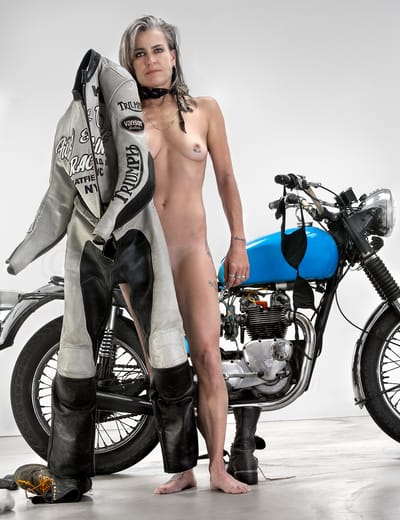

Roselli has been riding a motorcycle since she was twenty seven years old, within her practice she not only uses Photography as her main method of working, but within this also uses paint as well; often working with the female body as a sculpture within her work, creating performance like pieces and creating narratives. One of her most inspiring pieces was “The Naked Bike Project- Re-imagining the portrayal of women in motorcycling.” Throughout this project Roselli was looking at the stereotype that women bikers have been subject to over the years; posing these girls as being nothing more than a ”Dudes trophy girl posed up on top of a trophy bike.”
I feel especially drawn to the work of Grace Roselli, purely for the fact that her project and the photographs that she takes are almost like a voice; a platform for individuals outside of the biking community to inform them of what female biking is really like and what it really means to be a female motorcycle rider in the 21st century. I find the images that she takes visually pleasing, portraying a sense of power
and ownership, which radiates from them. These are the kind of images that I am looking to create and the message that I am looking to
bring across to my audience.
I feel especially drawn to the work of Grace Roselli, purely for the fact that her project and the photographs that she takes are almost like a voice; a platform for individuals outside of the biking community to inform them of what female biking is really like and what it really means to be a female motorcycle rider in the 21st century. I find the images that she takes visually pleasing, portraying a sense of power
and ownership, which radiates from them. These are the kind of images that I am looking to create and the message that I am looking to
bring across to my audience.
Artist research - Hassan Hajjaj


Hajjaj is a contemporary photographer originally from Morocco. A lot of his images are placed within frames made up of well known brands taking on a fine art and popular culture feeling within them, also the use of bright colours and interesting backgrounds making the images stand out. ‘Kesh Angels’ was a project that Hajjaj created was focused around the bike culture of Marrakesh; the project was a
take on the ‘Hell’s Angels gang in America’ The models that Hajjaj uses are close friends of his, so he has already established a connection with the individuals that he uses. He described the girls as being “girls who usually paint henna tattoos on tourists in the main square, but you still wouldn’t want to run into them in a dark alley”, “These girls are tough.”
I am especially interested by the work that Hajjaj creates, because although his work is staged and a lot of these women don’t even own their own motorcycle. But it is not so much about the aesthetics of the images that I am interested in, its more about how Hajjaj has given these women a voice, allowing them to take control of the way that they are posed; giving them a sense of power in these images.
take on the ‘Hell’s Angels gang in America’ The models that Hajjaj uses are close friends of his, so he has already established a connection with the individuals that he uses. He described the girls as being “girls who usually paint henna tattoos on tourists in the main square, but you still wouldn’t want to run into them in a dark alley”, “These girls are tough.”
I am especially interested by the work that Hajjaj creates, because although his work is staged and a lot of these women don’t even own their own motorcycle. But it is not so much about the aesthetics of the images that I am interested in, its more about how Hajjaj has given these women a voice, allowing them to take control of the way that they are posed; giving them a sense of power in these images.
Further artist research -Danny Lyon


Danny Lyon is a photographer and film maker from America. The work that he creates takes on a journalistic approach with his common interests being Socioeconomic, counter-cultural and civil rights issues. The main themes within the images that Lyon creates include: 'Protestors being arrested', 'Outlaw biker gangs' and 'The destruction of historic neighbourhoods'.
A quote that I was drawn to by Danny Lyon in response to his own work was "The pictures do not ask you to help these people, but something more difficult; to be briefly, intensely aware of their existence, an existence as real and significant as your own".
I am especially drawn to this artist purely for the fact that his project Outlaw biker gangs, takes on a similar feel to my own project, 'The female biker'; working closely with these individuals in order to build a connection with them, to the point that you immerse yourself with them so much that you almost become one of them. I am also drawn to the fact that Danny Lyon uses black and white within each of his images, this is something that I have been interested in using for my own images since the beginning.
A quote that I was drawn to by Danny Lyon in response to his own work was "The pictures do not ask you to help these people, but something more difficult; to be briefly, intensely aware of their existence, an existence as real and significant as your own".
I am especially drawn to this artist purely for the fact that his project Outlaw biker gangs, takes on a similar feel to my own project, 'The female biker'; working closely with these individuals in order to build a connection with them, to the point that you immerse yourself with them so much that you almost become one of them. I am also drawn to the fact that Danny Lyon uses black and white within each of his images, this is something that I have been interested in using for my own images since the beginning.
Further artist research - Linda K Aplern

Linda K Alpern is a documentary photographer situated in New York. She has spent a good portion of her life photography in and around the city. The main inspirations for her work are her family and her previous vocation, working as a registered nurse back in the 70's. This is an ongoing project that Alpern is carrying out named 'documenting life on-duty'. The project takes on a documentary style as the photographs that she takes throughout the project are accompanied by writing, this will include parts taken from interviews that Alpern conducts including herself and nurses in the hospital.
For my own ongoing project I was inspired by the work of Alpern purely for the way that she is executing her current project 'documenting life on-duty', including photographs along with text taken from interviews she had with nurses at the hospital. This is similar to my own project because I am looking to include text along with my images, text which I will gain trhough asking each of the bikers that I photograph a series of questions including a bit of background information about themselves as well as their experience as being a female biker and any judgement that they have faced during this time.
For my own ongoing project I was inspired by the work of Alpern purely for the way that she is executing her current project 'documenting life on-duty', including photographs along with text taken from interviews she had with nurses at the hospital. This is similar to my own project because I am looking to include text along with my images, text which I will gain trhough asking each of the bikers that I photograph a series of questions including a bit of background information about themselves as well as their experience as being a female biker and any judgement that they have faced during this time.
301 bibliography
Online-
- Artnet. 2020. Danny Lyon (American, born 1942). [ONLINE] Available at: http://www.artnet.com/artists/danny-lyon/. [Accessed 10 January 2020]
- Artnet. 2020. Hassan Hajjaj (Moroccan, born 1961). [ONLINE] Available at: http://www.artnet.com/artists/hassan-hajjaj/. [Accessed 20 November 2019]
- Artsy.net. 2018. Linda K Alpern. [ONLINE] Available at: https://www.artsy.net/artist/linda-k-alpern. [Accessed 10 January 2020]
- MCN. 2017. Artist re-imagines women within motorcycle culture. [ONLINE] Available at: https://www.motorcyclenews.com/news/2017/january/new-york-artist-grace-roselli-looks-at-women-in-motorcycling/. [Accessed 20 November 2019].
- Timeline. 2017. The women of the Hell's Angels were bad, brassy, bombshell 'old ladies'. [ONLINE] Available at: https://timeline.com/women-hells-angels-ladies-3134cbae0776. [Accessed 15 November 2019].
- McDonald-Walker, S., 2000. Bikers Culture, Politics and Power. 1st ed. United Kingdom: Oxford International Publishers.
Critical reflection on practice
How would you describe/classify your current photographic practice in approximately 75 words?
Currently my photographic practice has taken a turn from previous projects that I have carried out. Currently I am looking into the relationship between photography and people, and the role that photography has to play in narrative images and other visual work. Through undertaking both primary and secondary research methods I also hope to be able to understand whether photography can be used as a way of benefiting the individual(s) involved in the process of taking these images, or whether in fact it can add to the misconceptions that we have about individuals of different categories/groups.
Who is/are the audience(s) for your work currently?
Currently the audience that my work is aimed at is individuals’ that fit into a characteristic, for example age, gender identity, ethnicity, religion or sexual orientation that feel that either have or still are being judged by other people as a result of having this type of characteristic. Individuals’ that have a characteristic that makes them more vulnerable to either being judged, bullied or harmed, are classed as high risk characterized individuals. I want individuals’ to be able to relate to my work and feel a connection with the individuals’ that are involved in my project and the stories that the images tell.
Creatively and photographically - what are you motivated by?
I am mostly motivated by images that have a strong narrative and have a greater meaning behind them than just what is visually apparent within the image itself, I look for things much deeper than this. This is what I want my images to show; I want people to be able to connect to my images in the way that I can connect with other artists work.
Whose work are you most inspired and influenced by, and why?
The artists that I am most inspired by are:
Cindy Sherman- I am inspired by the work that Sherman creates because although a lot of the work that she creates involves a lot of makeup and is usually staged, it is about what the images are actually showing and the message that Sherman is trying to convey to her audience; showing that being different is not always a bad thing, and standing out lets the world see you better for who you really are.
Jeff Wall- I am inspired by the work that Wall creates because of the subjects that are discussed within his images, including, “Urban violence, racism, poverty, class and gender”. A lot of Wall’s work is staged, but I like the message that each image connotes, and the feeling that it brings across to the audience; almost like a sense of escapism.
Nan Goldin- I am inspired by the work that Goldin creates as each of her images is unique and very intimate to her. I am also interested by the fact that her work highlights themes such as the LGBT. Some of her images may be staged, however, the way that she has taken her images is almost in the form of a documentary style; catching the moment in all its glory.
What are the core/recurring themes/ideas that appear in your work?
The recurring themes within my work include personal aspects; things that all individuals’ have either experienced or can relate to either on a personal level or that they have experienced through another individual, for example a family member, friend or a partner. Some of the most common themes include, Mental illness, for example displaying through images what it is like living the with this illness, highlighting aspects such as Anxiety, Depression, OCD and Self Harming. When working on topics such as these, I tend to use dark colours, sometimes even a black and white filter to add more emphasis to the image(s), and as a way of highlighting the main aspects within the image, whilst not giving everything away; allowing the viewer to connect with the work in their own way, and finding things within the image that some people may not have found within it, due to their own personal ideas and experiences.
From where do these originate? (E.g. Your upbringing, family histories, educational background, personal likes or dislikes)
For me a lot of the ideas I have for my projects resonate from my past experiences, as well as my own personal likes and dislikes with some of the work that current artists are making and comparing it some of the things that I am interested in. I constantly find myself taking inspiration from things that I can connect to on a personal level; whether this be images, writing and/or people, such as artists, as well as other inspirational people. I feel that I tend to hold my cards quite close to my chest and never really tend to let people in fully, only allowing them to have a sneak preview of myself, but when I find a topic that I am really interested in, that is when I really allow myself to shine through and let people get to know me and my story.
Reflecting critically on the ‘top 10’ images in your current portfolio, what are the main strengths of your work?
From coming into a photography degree as someone whom had never studied any photography or art related course previously, this has meant that I must learn the basic skills and how to use a range of equipment very quickly, as well as ‘perfecting’ these techniques in order to increase the quality of my images. As a result of this I feel that I am still in the stage of working on my portfolio; and at the same time working hard on building up my skill base in order to keep increasing the quality of my images, till I find something that truly shows my skills and qualities. Now I would say one of my key strengths is that I am able to communicate well with individuals’ whom I have not met before, meaning that I am able to make connections easily with individuals’, this can be used as an advantage within my projects.
What are the limitations / areas for development?
For me my limitations are that before I began my degree, I never studied photography or any other art practice, this meant that when I started my degree, I had a lot to learn, which meant that my work wasn’t up to the standard that it could have been. Currently I would say my area for development would editing my images, currently I know the basics for editing images, but I still need to learn how to use some of the other tools, available on software such as photoshop, InDesign and lightroom. This would enable me to improve the quality of my images and to use the tools to make changes and enhancements.
How is your work informed by research?
With each of the projects I carry out, I always start off with an idea and then begin by looking at artists whose work is similar to my own project that I am carrying out, this gives me additional ideas and inspiration for my own project. Once I have my idea and my inspiration, I am then able to carry out further research, using methods such as the internet, books and interviews this then allows me to increase the knowledge base for my project. This also allows me to be more involved with my project and the work that I am creating.
Name one key theory/theoretical position that could be applied to your current work?
Discrimination and Categorization
How could you produce your work differently – creatively, technically, practically?
I could produce my work differently by being more open to new ideas and new methods of working, for example using video/stop motion photography and sound. Through using these methods, it will allow me to become more creative within my practice.
How will your contextualization / dissertation module inform your creative production?
Through writing my dissertation this will inform my creative production through allowing me to become more informed of my subject matter, this will then allow me to truly connect with my work and the individuals’ that are involved within the project.
What were the 5 most important things that you learned during your studies last year?
I wish that I had learnt how to properly make connections with individuals that you are looking to use within your project. How to talk to them whilst you are carrying out the task, and how to direct individuals’, getting them to do what you need them to do without it being awkward or for you to feel like you are being ‘bossy’. This is something that usually takes place within commercial photography, but it is something that I feel could have and still would be beneficial to my own practice. This is something that I hope that I can learn this year; possibly when I carry out the shadowing/placements that I will be doing throughout this year.
Are there any personal/circumstantial issues that might hinder you from achieving goals this year? If so, what are your strategies for overcoming them?
Still being a sufferer of anxiety and depression, I feel that this could hinder me at times when I begin to feel stressed. Sometimes as soon as I start to feel stressed, I want to immediately remove whatever it is that is causing me the stress, however, when carrying out a project like the one that I will be doing this year this is not something that is possible. So, it is important that I find ways to deal with this stress so that it does overtake me and my project. This is where I feel that by using the resources that are available to me, I will be able to feel more in control and so as a result should be able to manage this stress more effectively, so that it does not cause further damage to myself and jeopardise the potential for my project.
Currently my photographic practice has taken a turn from previous projects that I have carried out. Currently I am looking into the relationship between photography and people, and the role that photography has to play in narrative images and other visual work. Through undertaking both primary and secondary research methods I also hope to be able to understand whether photography can be used as a way of benefiting the individual(s) involved in the process of taking these images, or whether in fact it can add to the misconceptions that we have about individuals of different categories/groups.
Who is/are the audience(s) for your work currently?
Currently the audience that my work is aimed at is individuals’ that fit into a characteristic, for example age, gender identity, ethnicity, religion or sexual orientation that feel that either have or still are being judged by other people as a result of having this type of characteristic. Individuals’ that have a characteristic that makes them more vulnerable to either being judged, bullied or harmed, are classed as high risk characterized individuals. I want individuals’ to be able to relate to my work and feel a connection with the individuals’ that are involved in my project and the stories that the images tell.
Creatively and photographically - what are you motivated by?
I am mostly motivated by images that have a strong narrative and have a greater meaning behind them than just what is visually apparent within the image itself, I look for things much deeper than this. This is what I want my images to show; I want people to be able to connect to my images in the way that I can connect with other artists work.
Whose work are you most inspired and influenced by, and why?
The artists that I am most inspired by are:
Cindy Sherman- I am inspired by the work that Sherman creates because although a lot of the work that she creates involves a lot of makeup and is usually staged, it is about what the images are actually showing and the message that Sherman is trying to convey to her audience; showing that being different is not always a bad thing, and standing out lets the world see you better for who you really are.
Jeff Wall- I am inspired by the work that Wall creates because of the subjects that are discussed within his images, including, “Urban violence, racism, poverty, class and gender”. A lot of Wall’s work is staged, but I like the message that each image connotes, and the feeling that it brings across to the audience; almost like a sense of escapism.
Nan Goldin- I am inspired by the work that Goldin creates as each of her images is unique and very intimate to her. I am also interested by the fact that her work highlights themes such as the LGBT. Some of her images may be staged, however, the way that she has taken her images is almost in the form of a documentary style; catching the moment in all its glory.
What are the core/recurring themes/ideas that appear in your work?
The recurring themes within my work include personal aspects; things that all individuals’ have either experienced or can relate to either on a personal level or that they have experienced through another individual, for example a family member, friend or a partner. Some of the most common themes include, Mental illness, for example displaying through images what it is like living the with this illness, highlighting aspects such as Anxiety, Depression, OCD and Self Harming. When working on topics such as these, I tend to use dark colours, sometimes even a black and white filter to add more emphasis to the image(s), and as a way of highlighting the main aspects within the image, whilst not giving everything away; allowing the viewer to connect with the work in their own way, and finding things within the image that some people may not have found within it, due to their own personal ideas and experiences.
From where do these originate? (E.g. Your upbringing, family histories, educational background, personal likes or dislikes)
For me a lot of the ideas I have for my projects resonate from my past experiences, as well as my own personal likes and dislikes with some of the work that current artists are making and comparing it some of the things that I am interested in. I constantly find myself taking inspiration from things that I can connect to on a personal level; whether this be images, writing and/or people, such as artists, as well as other inspirational people. I feel that I tend to hold my cards quite close to my chest and never really tend to let people in fully, only allowing them to have a sneak preview of myself, but when I find a topic that I am really interested in, that is when I really allow myself to shine through and let people get to know me and my story.
Reflecting critically on the ‘top 10’ images in your current portfolio, what are the main strengths of your work?
From coming into a photography degree as someone whom had never studied any photography or art related course previously, this has meant that I must learn the basic skills and how to use a range of equipment very quickly, as well as ‘perfecting’ these techniques in order to increase the quality of my images. As a result of this I feel that I am still in the stage of working on my portfolio; and at the same time working hard on building up my skill base in order to keep increasing the quality of my images, till I find something that truly shows my skills and qualities. Now I would say one of my key strengths is that I am able to communicate well with individuals’ whom I have not met before, meaning that I am able to make connections easily with individuals’, this can be used as an advantage within my projects.
What are the limitations / areas for development?
For me my limitations are that before I began my degree, I never studied photography or any other art practice, this meant that when I started my degree, I had a lot to learn, which meant that my work wasn’t up to the standard that it could have been. Currently I would say my area for development would editing my images, currently I know the basics for editing images, but I still need to learn how to use some of the other tools, available on software such as photoshop, InDesign and lightroom. This would enable me to improve the quality of my images and to use the tools to make changes and enhancements.
How is your work informed by research?
With each of the projects I carry out, I always start off with an idea and then begin by looking at artists whose work is similar to my own project that I am carrying out, this gives me additional ideas and inspiration for my own project. Once I have my idea and my inspiration, I am then able to carry out further research, using methods such as the internet, books and interviews this then allows me to increase the knowledge base for my project. This also allows me to be more involved with my project and the work that I am creating.
Name one key theory/theoretical position that could be applied to your current work?
Discrimination and Categorization
How could you produce your work differently – creatively, technically, practically?
I could produce my work differently by being more open to new ideas and new methods of working, for example using video/stop motion photography and sound. Through using these methods, it will allow me to become more creative within my practice.
How will your contextualization / dissertation module inform your creative production?
Through writing my dissertation this will inform my creative production through allowing me to become more informed of my subject matter, this will then allow me to truly connect with my work and the individuals’ that are involved within the project.
What were the 5 most important things that you learned during your studies last year?
- Using the crit sessions to my advantage and making sure that I am always bringing along new work to be shown and discussed within the class.
- Making full use of the resources available to me, including the library, workshops, the tutors and all the equipment available within the college.
- I also learnt that by completing small amounts of work each day, it will make the workload more manageable and will allow you to complete the task more quickly.
- I have also learnt how to make connections with individuals. Especially individuals’ whom I will be using within my project.
- It is also important to take full advantage of opportunities that arise during your academic year, including work/shadowing opportunities.
I wish that I had learnt how to properly make connections with individuals that you are looking to use within your project. How to talk to them whilst you are carrying out the task, and how to direct individuals’, getting them to do what you need them to do without it being awkward or for you to feel like you are being ‘bossy’. This is something that usually takes place within commercial photography, but it is something that I feel could have and still would be beneficial to my own practice. This is something that I hope that I can learn this year; possibly when I carry out the shadowing/placements that I will be doing throughout this year.
Are there any personal/circumstantial issues that might hinder you from achieving goals this year? If so, what are your strategies for overcoming them?
Still being a sufferer of anxiety and depression, I feel that this could hinder me at times when I begin to feel stressed. Sometimes as soon as I start to feel stressed, I want to immediately remove whatever it is that is causing me the stress, however, when carrying out a project like the one that I will be doing this year this is not something that is possible. So, it is important that I find ways to deal with this stress so that it does overtake me and my project. This is where I feel that by using the resources that are available to me, I will be able to feel more in control and so as a result should be able to manage this stress more effectively, so that it does not cause further damage to myself and jeopardise the potential for my project.
First shoot


07/10/2019- First birthday cake smash
I found this shoot really interesting because I have not worked with children before and so although Taylor is the photographers own child, it was still really interesting to see how she works with him in a studio setting.
- Studio setting
- 2x backdrops
- Props included Photo frame of Taylor as a baby and decorated letters spelling out the number one. Also a balloon garland had been made for the shoot.
- Duration of the shoot was 2 hours
I found this shoot really interesting because I have not worked with children before and so although Taylor is the photographers own child, it was still really interesting to see how she works with him in a studio setting.
Second Shoot



16/10/2019- Family photo shoot
- Studio setting
- Family of 6 - mum, dad, 6yr old, 5yr old, 2yr old and a two week old baby
- 3 backdrops
- Props included bunting, small rugs, make shift bed for the baby, large beanbag and blankets
- Duration of the shoot 1 hour
- First set of images included the baby, whilst she was still asleep, alternately using two different props as beds.
- The second set of images included all of the girls sat together. During this part of the shoot we were experiencing issues with the two youngest girls; the baby wanted mum, and the two year old was becoming bored with just staying sat down, so mum and dad had to distract her with videos on their phones.
- The third set of images included the two year old on her own. It took a lot of distraction to keep her looking at the camera.
- The fourth set of images were of the five year old on her own, this little girl was a right character and was full of lots of different poses, which made it easy to work with.
- The fifth set were of the eldest girl; she was really great to work with, as she was older this meant that she listened to instruction better.
- For the sixth set of images we changed the backdrops. We initially started off with the two eldest girls together and then we added in the two youngest girls, so that we had all of them sat together. Then unfortunately the two year old began to get upset and so we ended up with the two eldest girls sat with the baby.
- For the whole family shoot we moved to the white backdrop and varied from having them standing to sitting on the beanbag and then using one of the previous backdrops with them sitting/kneeling on the floor.
Third shoot



21/10/2019 - Family photoshoot at Saltram
- Location shoot - Saltram, National Trust house and gardens
Artist talk with Dinu Li

Representation, Self-expression and performed gesture
Dinu Li
Nation Family – 2017 – Single channel video installation
Crescendo – 2010 – Single channel video with sound
Dinu Li
- Gina Pane and Francois Mason – using her body as a canvas within her performance work she creates. Francois Mason works as a commercial photographer. Is the performance heightened by the use of the commercial photographer rather than a photographer who is more discreet in the way that they take the images?
- Dinu Li has a great interest in archives
- ‘The rising sun in China’
Nation Family – 2017 – Single channel video installation
- The title written in Chinese means ‘Country’
- Psychological escapism – An image displayed his uncle holding what looked to be a radio whilst situated in the labor camp, however on confronting his uncle about this, he said in fact it was a brick with a bamboo shoot poking out of the top with buttons painted on it. Although he could not physically hear anything from this object, psychologically he could hear music playing; this was his escapism from the horrible reality that he was living in.
- In the video it displays a range of images, in the background you can hear a radio being tuned, changing through the channels.
- Then two individuals began discussing the experience of the labor camp; the things that they would get them doing and punishment that they would receive if they didn’t do it.
- During the new year they would come back to see their family, but the individuals were never the same; they were reciting the story of Dinu Li’s uncle and the brick.
- Metal - arts organization helped support the work of Dinu Li with the making of his video
Crescendo – 2010 – Single channel video with sound
- To make this Dinu Li went on a 3-month residency again using archives within his work
- A state funded museum collaborated with him on his work as part of this project
- He met a group of individuals, whilst he was taking the bus and he saw them in the middle of the dual carriageway burning pieces of paper, including old funeral documentation, Dinu immediately got off the bus and questioned the individuals on why they were carrying out this old tradition in the place that they were and not on the pavement out of the traffic, and they said that the exact place where they were burning the paper was where they used to live and China knocked these houses down and built the dual carriageway.
- So as a result, they were angry. Dinu Li asked them if they would be interested in creating a project with him to display how angry they were. He decided to create a flash mob that would take place on the metro and they would be confronting each other about the immediate issue. Within this project Dinu Li was also working alongside another artist, making this project a collaboration piece.
- They decided to execute the project on a Saturday when they knew that the metro would be at its busiest. The project was overall a real success as the team started accidently shouting at individuals who weren’t part of their group and these other individuals were also getting involved; creating a sense of realism throughout their project.
- This project was quite high risk, as causing trouble on the metro can land you in a great deal of trouble and people were becoming very upset about the group filming.
- The execution of the flash mob did not go as planned and instead of carrying out the ‘confrontation’ and going about their business again, they instead got embroiled in a situation that could have resulted in them becoming arrested.
Lecture with Rachel Gippetti

Tips on how to present to an audience
Prepare for your presentation -->
*Presentation structure*
Discuss your recent project using the presentation structure -
*Giving feedback -
Shit Sandwich for giving feedback -
Creating an Elevator pitch for your project-
I am currently undertaking a project involving photographing female motorcycle riders in a bid to change the stigma around the community and instead replace it with the idea that these women are strong, powerful, independent and important individuals within society.
In this part of the lecture we had to create notes that would enable us to give a presentation to our fellow colleagues. At first we worked in pairs, then in a four. This task was really interesting as when you were working in pairs, it felt quite personal like you were having a formal chat with the individual, however, when working in a four it became more difficult, as you had to make sure that you made eye contact with all the individuals in the group, as well as making sure that your body language and volume was appropriate for the type of presentation that you are giving.
This is what I wrote:
Hello, my name is Jasmine and I will be talking to you about my project about female bikers with the motorcycle community and the stigma attached to them.
Within this presentation I will be discussing the following points:
To summarise this presentation I have discussed:
The importance of carrying out a project like this one and the benefit that this can have on my audience and the individuals involved and the empowerment that this can have on female motorcycle riders.
- Be nice to yourself
- Give a smile to your audience, gives a good start to your presentation and will make things less awkward
- "High Power" body language vs "Low Power" body language will allow you to feel more in control and will impact the way you think and feel about your presentation.
- Got to your happy place
- Breathe! Focus on your breathing, this will relax you
- What you do with your arms /hands is really important --> keep them at waist height
Prepare for your presentation -->
- Practice - (In front of friends, family, mirror or record yourself)
- Structure - Keep it simple
- Use cue cards - You don't have to memorise everything
- Use of images makes the presentation interesting and also means that the audience aren't always looking at you
- Pretend to be confident
*Presentation structure*
- Introduce yourself - Say what you are going to discuss (Beginning)
- Say it in three key points (Middle)
- Summarise your presentation - Reflect (End)
Discuss your recent project using the presentation structure -
- Photographing female motorcycle riders
- Through the use of photography I am photographing female members from the motorcycle community in a bid to change the stigma around them and to instead bring across the idea of strong, powerful and independent women who ride motorcycles.
- I am part of the motorcycle community and was aware of the issue, but have never really looked at it on this scale before.
- Because it is something new and very personal
- Timing - Meeting up/equipment availability etc
*Giving feedback -
- Body language
- Confidence
- Eye contact
- Enthusiasm
- Structure
- Volume
- Speed
- Language
Shit Sandwich for giving feedback -
- Say something positive
- Followed by something constructive
- Say something positive again
Creating an Elevator pitch for your project-
I am currently undertaking a project involving photographing female motorcycle riders in a bid to change the stigma around the community and instead replace it with the idea that these women are strong, powerful, independent and important individuals within society.
In this part of the lecture we had to create notes that would enable us to give a presentation to our fellow colleagues. At first we worked in pairs, then in a four. This task was really interesting as when you were working in pairs, it felt quite personal like you were having a formal chat with the individual, however, when working in a four it became more difficult, as you had to make sure that you made eye contact with all the individuals in the group, as well as making sure that your body language and volume was appropriate for the type of presentation that you are giving.
This is what I wrote:
Hello, my name is Jasmine and I will be talking to you about my project about female bikers with the motorcycle community and the stigma attached to them.
Within this presentation I will be discussing the following points:
- The process of photographing female members from the biking community
- The message that I am trying to give to my audience
- And the impact that doing a project like this one will have on my audience and members of the biking community
- The process of photographing a select few individuals from the biking community was done so that it enabled me to build a close connection with these individuals in order to understand them better, this would then enable me to take better photographs.
- The message that I am trying to bring across to my audience is the idea of strong, powerful and independent women who ride motorcycles.
- Through carrying out a project like this one I am to: Bring awareness, Build connections, Build a community, Give women power
To summarise this presentation I have discussed:
The importance of carrying out a project like this one and the benefit that this can have on my audience and the individuals involved and the empowerment that this can have on female motorcycle riders.
Artist talk with Brett Lockwood



- Brett Lockwood studied at the Plymouth College of Art approximately three years ago.
- Finite is a project that looks at the environment. Throughout this project he created multiple petri-dishes encompassing different items that were used to portray small parts of land and the effects that things such as climate change and human interference has on them. In total he created 20 of these miniature landscapes which he used to represent a dying rain forest (Deforestation).
- After graduation from the Plymouth College of Art, Brett took a visual break and decided to travel to visit a rain forest; something which he had wanted to do for a long time.
- After this he then spent some time working in order to make some money.
- He then applied and began working with a company called 'Karst' - (Plymouth's leading independent contemporary visual arts space). Whilst working with 'Karst', they became interested in the work that Brett had been carrying out on the topic of deforestation using the petri dishes. A project that he thought he had finished in fact led him to extend on the work that he had been created.
- Following on from this Brett decided to give his petri-dish series some exposure and decided to display them in a public space. This was almost like an experiment to see how individuals would treat these objects that represented the rain forest. He said surprisingly only one of the petri-dishes were completely destroyed, and the others thankfully remained untouched.
- He was later approached by a bank to photograph some athletes that were doing a 24 hour event. He had become recognized from this company from his series of images that he had previously taken of contemporary dancers.
- He has already shot and put together a music video for an artist called 'Carnady' and her song called 'Summer Love'.
- Brett discussed how his personal work always goes back to theme of nature and topics such as deforestation and human interaction.
- Within one of his projects he was also looking at how nature would react without any humans. "The sudden human departure".
- Brett also discussed how some of his work was inspired by a game that he likes on 'Twitch'.
- Brett has said that he finds shooting to be a source of primary research.
- The methodology for editing his images is by making them fit the theme that he is going with. Initially he made the images beautiful and then changed them completely by turning the saturation right down, so it made the image quite depressing. He describes his work as 'symbolic'.
Artist talk with Arko Datto



- Arko Datto is an artist that was born in India.
- He originally studied science in France before moving onto do work on photography in Denmark.
- He is a visual artist usually working on topics around environmental issues, including climate change.
- During his time as an artist he has currently published two books; (Will my mannequin be home when I return) and (Pik...Nik)
- 'Kings of a Bereft Land' (2017) is a series of images that show individuals that have been affected by economic issues within their country, this series is made of landscapes as well as portraits. The portraits are used as a way of telling each individuals story about how they have been affected. The landscapes are used to show how the land has been affected by climate change.
- A lot of the individuals included in the project are very poor. These issues have made an already difficult situation even more difficult.
- Many young individuals have been born and grown up with climate change, this is the norm for them.
- The project looks at memory and mapping, how things have changed for these individuals.
- One of his images is an image named 'The Ark' almost like Noah's Ark; looking at what you do when there is no more land left.
- An image of a man carrying a spiritual statue that he is not allowed to put down symbolizes the societies closeness to their religion, especially during times of devastation and suffering.
- In each of Arko Datto's images from his series are shown to be very resourceful; using various different materials in order to build things and in order to live.
- His second project - 'Where do we go when the final wave hits' - In this project Arko Datto was thinking about climate change during the night time. He created a video that included images as well as sound that displayed people being inside the water in some form and high up. Showing individuals travelling from different areas through the use of boats. The battle between climate change as well as terrorism.
- His third project - 'Terra Mutata' - Another project that includes images taken during the night time. Spectral presences that climate change has left behind ; lands that have been taken by the sea, leaving only the memory of them. Giving visual meaning to the catastrophization.
- This project is different from the second because the images are captured using infrared and long exposure stills, giving this beautiful pink haze look. Giving beauty to things/places that have been destroyed.
Email to International and EU-Based Artist_ Photographer


Dear (Artist/ Photographer Name),
Firstly, thank you for your time in reading this message. I am a third-year BA (Hons) Photography student at Plymouth College of Art, and we are currently raising funds towards our final degree show at Free Range in London 2020, which means contacting artists and photographers like yourself for a book and print(s) which you may be able to donate for us to auction off at our Print Auction in December this year.
As I have long been an admirer of your work, I would be genuinely honoured if you would be able to donate a print for our Print Auction, ‘ISO19’ on the 10th of December 2019. If needed, we would be able to reimburse you for post and packaging costs from sending us your work.
If you’d like to follow our progress on social media and through our Facebook event, you can find that [here].
Hyperlink “here” with this link: https://www.facebook.com/events/765272723910506/
I look forward to your reply and hope to hear from you soon!
Many thanks,
(Your Name)
BA (Hons) Photography
Plymouth College of Art
Tavistock Place
Plymouth PL4 4AT
Firstly, thank you for your time in reading this message. I am a third-year BA (Hons) Photography student at Plymouth College of Art, and we are currently raising funds towards our final degree show at Free Range in London 2020, which means contacting artists and photographers like yourself for a book and print(s) which you may be able to donate for us to auction off at our Print Auction in December this year.
As I have long been an admirer of your work, I would be genuinely honoured if you would be able to donate a print for our Print Auction, ‘ISO19’ on the 10th of December 2019. If needed, we would be able to reimburse you for post and packaging costs from sending us your work.
If you’d like to follow our progress on social media and through our Facebook event, you can find that [here].
Hyperlink “here” with this link: https://www.facebook.com/events/765272723910506/
I look forward to your reply and hope to hear from you soon!
Many thanks,
(Your Name)
BA (Hons) Photography
Plymouth College of Art
Tavistock Place
Plymouth PL4 4AT
Email to UK-Based Artist_ Photographer
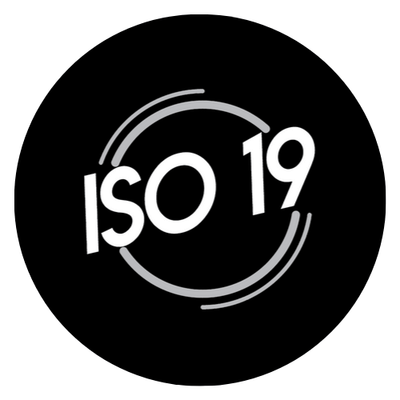

Dear (Artist/Photographer name),
Firstly, thank you for your time in reading this message. I am a third-year BA (Hons) Photography student at Plymouth College of Art, and we are currently raising funds towards our final degree show at Free Range in London 2020, which means contacting artists and photographers like yourself for a book and/or print(s) which you may be able to donate for us to auction off at our Print Auction in December this year.
As I have long been an admirer of your work, I would be genuinely honoured if you would be able to donate a print for our Print Auction, ‘ISO19’ on the 10th of December 2019. If needed, we would be able to reimburse you for post and packaging costs from sending us your work.
We would also like to take this opportunity to invite you to attend the Print Auction too. I’ve attached a poster with all the information, but if you’d prefer to follow our progress on social media and through our Facebook event [here].
Hyperlink “here” with this link: https://www.facebook.com/events/765272723910506/
I look forward to your reply and hope to hear from you soon!
Many thanks,
(Your Name)
BA (Hons) Photography
Plymouth College of Art
Tavistock Place
Plymouth PL4 4AT
Firstly, thank you for your time in reading this message. I am a third-year BA (Hons) Photography student at Plymouth College of Art, and we are currently raising funds towards our final degree show at Free Range in London 2020, which means contacting artists and photographers like yourself for a book and/or print(s) which you may be able to donate for us to auction off at our Print Auction in December this year.
As I have long been an admirer of your work, I would be genuinely honoured if you would be able to donate a print for our Print Auction, ‘ISO19’ on the 10th of December 2019. If needed, we would be able to reimburse you for post and packaging costs from sending us your work.
We would also like to take this opportunity to invite you to attend the Print Auction too. I’ve attached a poster with all the information, but if you’d prefer to follow our progress on social media and through our Facebook event [here].
Hyperlink “here” with this link: https://www.facebook.com/events/765272723910506/
I look forward to your reply and hope to hear from you soon!
Many thanks,
(Your Name)
BA (Hons) Photography
Plymouth College of Art
Tavistock Place
Plymouth PL4 4AT
Invitation letter


Dear (Their Name),
Thank you for taking the time to read this message. I am a third-year BA(Hons) Photography student at Plymouth College of Art. My cohort and I are currently raising funds towards our final exhibition at Free Range in London 2020. Free Range is a huge annual exhibition showcasing a variety of photography from almost all universities in the United Kingdom. This exhibition is something that we have been ramping up to since our first day at university, and we want to make sure we do it right.
Our largest event is a Print Auction which will be held on the 10th December 2019 in the Plymouth College of Art Student Union Bar (Tavistock Place, PL4 4AT). We would be honoured if you would join us for a festive-themed evening of mince pies and mulled wine or apple juice. Doors open at 5:30 p.m. and the auction will begin at 6 p.m.
I have attached a poster with all the information, but if you’d prefer you can follow our progress on social media and through our Facebook event:
https://www.facebook.com/events/765272723910506/
I look forward to your reply and hope to hear from you soon!
Many thanks,
(Your Name)
BA (Hons) Photography
Plymouth College of Art
Tavistock Place
Plymouth PL4 4AT
Thank you for taking the time to read this message. I am a third-year BA(Hons) Photography student at Plymouth College of Art. My cohort and I are currently raising funds towards our final exhibition at Free Range in London 2020. Free Range is a huge annual exhibition showcasing a variety of photography from almost all universities in the United Kingdom. This exhibition is something that we have been ramping up to since our first day at university, and we want to make sure we do it right.
Our largest event is a Print Auction which will be held on the 10th December 2019 in the Plymouth College of Art Student Union Bar (Tavistock Place, PL4 4AT). We would be honoured if you would join us for a festive-themed evening of mince pies and mulled wine or apple juice. Doors open at 5:30 p.m. and the auction will begin at 6 p.m.
I have attached a poster with all the information, but if you’d prefer you can follow our progress on social media and through our Facebook event:
https://www.facebook.com/events/765272723910506/
I look forward to your reply and hope to hear from you soon!
Many thanks,
(Your Name)
BA (Hons) Photography
Plymouth College of Art
Tavistock Place
Plymouth PL4 4AT
Press Release


Press Release
(Date)
Plymouth College of Art BA(Hons) Photography students set to host a print auction
fundraiser at the Student Union Bar at Plymouth College of Art.
BA(Hons) Photography students at Plymouth College of Art, working as a student collective named ISO19, will be hosting a print auction on December 10th to raise money for their end of degree show at Free Range, London, 2020.
The print auction contains signed prints and books from photographers such as: [...]
The auction will be hosted in the Student Union Bar in the Tavistock Place Campus from 5:30 pm on Tuesday 10th December. Guests will have the opportunity to bid on the lots available and be in with the chance to own incredible photographic works, for a fraction of the price.
We are looking forward to a fun and sociable night, with complementary mulled wine or apple juice, mince pies, reasonably priced drinks and lots of interesting works on offer!
Our event is FREE ENTRY - so please come and have a look.
The funds raised from the auction will go towards Plymouth College of Arts, BA (Hons) Photography course Free Range Graduate Show in London in June 2019. The students cordially invite photographers, gallery owners, art collectors and wider industry partners looking for something unique, and to forge networks beyond the college itself.
To keep updated with our progress or any further information you can follow or contact us on:
Facebook: @ISO2019
Instagram: @ISO19
(Date)
Plymouth College of Art BA(Hons) Photography students set to host a print auction
fundraiser at the Student Union Bar at Plymouth College of Art.
BA(Hons) Photography students at Plymouth College of Art, working as a student collective named ISO19, will be hosting a print auction on December 10th to raise money for their end of degree show at Free Range, London, 2020.
The print auction contains signed prints and books from photographers such as: [...]
The auction will be hosted in the Student Union Bar in the Tavistock Place Campus from 5:30 pm on Tuesday 10th December. Guests will have the opportunity to bid on the lots available and be in with the chance to own incredible photographic works, for a fraction of the price.
We are looking forward to a fun and sociable night, with complementary mulled wine or apple juice, mince pies, reasonably priced drinks and lots of interesting works on offer!
Our event is FREE ENTRY - so please come and have a look.
The funds raised from the auction will go towards Plymouth College of Arts, BA (Hons) Photography course Free Range Graduate Show in London in June 2019. The students cordially invite photographers, gallery owners, art collectors and wider industry partners looking for something unique, and to forge networks beyond the college itself.
To keep updated with our progress or any further information you can follow or contact us on:
Facebook: @ISO2019
Instagram: @ISO19
Who do you think you are? (Personality and employability)
Test 1 - Myers and Briggs test
Personality code type-
Test 2 - The big five
- Introverted - 41%
- Extroverted - 59%
- Sensing - 43%
- Intuitive - 57%
- Thinking - 33%
- Feeling - 67%
- Perceiving - 34%
- Judging - 66%
Personality code type-
- ENFJ -The teacher
- ESFJ - The provider
- INFJ - The counsellor
Test 2 - The big five
- EI - Empathetic Idealist
- PC - Practical Caretaker
- AT - Analytical Thinker
- LM - Logical Mechanic
- Openness - 67%
- Conscientiousness - 65%
- Extroversion - 73%
- Agreeableness - 71%
- Neuroticism - 62.5%
About Coalescence


'Coalescence' is the merging of elements to form one mass. This is a beautiful metaphor symbolising how as a group of fifteen emerging artists, we are coming together for this exhibition at Free Range London in 2020.
Free Range is an annual show, which specialises in featuring fine art and photography from creative institutions across the United Kingdom.
As future graduates of Plymouth College of Art, we use this opportunity to exhibit our work to a wider audience. Hosted at Truman Brewery it's a free event that attracts a wide range of visitors from fellow artists to the general public. Our work will be showcased during Photography week two, on the 25th to the 29th of June.
To be able to afford the space in London, we need to raise a total of £5000, as of 26th February we have almost £2000 in donations. If you would like to support us, you can donate to our Go Fund me page here.
We will be posting regular updates of our progress on the dedicated Instagram account and Facebook Page. To discover more about the individuals exhibiting please visit the 'Photographers' page on this website.
Free Range is an annual show, which specialises in featuring fine art and photography from creative institutions across the United Kingdom.
As future graduates of Plymouth College of Art, we use this opportunity to exhibit our work to a wider audience. Hosted at Truman Brewery it's a free event that attracts a wide range of visitors from fellow artists to the general public. Our work will be showcased during Photography week two, on the 25th to the 29th of June.
To be able to afford the space in London, we need to raise a total of £5000, as of 26th February we have almost £2000 in donations. If you would like to support us, you can donate to our Go Fund me page here.
We will be posting regular updates of our progress on the dedicated Instagram account and Facebook Page. To discover more about the individuals exhibiting please visit the 'Photographers' page on this website.
Coalescence exhibition bio
As part of the writing team, one of my jobs was to create the bio for the Free Range exhibition in London, this would then go on to be published on our website in order to inform individuals' about who we are, as well as including some background history and information about our home town; Plymouth, and also discussing themes relating to the work that we have been creating.
Who we are-
Coalescence is a class of fifteen third year students and emerging artists whom have all studied on the BA photography degree together at the Plymouth College of Art. We are all passionate individuals who have a very unique style when it comes to photography and the way that we choose to display our work, often relating to personal themes within our projects with a strong message to follow.
Plymouth- up and coming city-
Plymouth has emerged like the phoenix from its war time devastation and destruction, into the inviting and modernistic ‘Ocean City’. It continues to involve and embrace its historical past, one example being the Pilgrim Fathers on their sail to America alongside Sir Francis Drake and the Spanish Armada. Plymouth is a well known naval base. Along side this, the city offers an Oceanic life style and activities.
Distinguishing Fine Art photography from Commercial photography-
When working as a Commercial photographer the individual is usually working for an individual and/or a company. As part of this they are required to meet a set criterion with careful guidelines and usually a restricted time scale in which to create the work. Whereas, Fine Art photography is something that is very subjective to the audience of which their thoughts and opinions may differ from the photographic art piece.
Aspects of work displayed-
The work that has been and is still being produced by individuals from the cohort of BA photography varies within its topic, style and form; closely looking at subjects such as, Political views, Human interaction and prejudism encompassing the use of social media and how we conform to ‘societies’ ideals, the use of Digital Manipulation to change the aesthetics of the images, as well as looking at Human versus nature. All of the work that is created as part of the Free Range Show in London will be constructed using many different forms, some being installations, prints and/or use of projection along with sound.
Who we are-
Coalescence is a class of fifteen third year students and emerging artists whom have all studied on the BA photography degree together at the Plymouth College of Art. We are all passionate individuals who have a very unique style when it comes to photography and the way that we choose to display our work, often relating to personal themes within our projects with a strong message to follow.
Plymouth- up and coming city-
Plymouth has emerged like the phoenix from its war time devastation and destruction, into the inviting and modernistic ‘Ocean City’. It continues to involve and embrace its historical past, one example being the Pilgrim Fathers on their sail to America alongside Sir Francis Drake and the Spanish Armada. Plymouth is a well known naval base. Along side this, the city offers an Oceanic life style and activities.
Distinguishing Fine Art photography from Commercial photography-
When working as a Commercial photographer the individual is usually working for an individual and/or a company. As part of this they are required to meet a set criterion with careful guidelines and usually a restricted time scale in which to create the work. Whereas, Fine Art photography is something that is very subjective to the audience of which their thoughts and opinions may differ from the photographic art piece.
Aspects of work displayed-
The work that has been and is still being produced by individuals from the cohort of BA photography varies within its topic, style and form; closely looking at subjects such as, Political views, Human interaction and prejudism encompassing the use of social media and how we conform to ‘societies’ ideals, the use of Digital Manipulation to change the aesthetics of the images, as well as looking at Human versus nature. All of the work that is created as part of the Free Range Show in London will be constructed using many different forms, some being installations, prints and/or use of projection along with sound.
Free range exhibition website
Meeting minutes
Minutes from 28th February 2020
Agenda-
Minutes from 2nd March 2020
Agenda-
Minutes from 6th March 2020
Alcohol-
Minutes-
Minutes from 9th March 2020
Agenda-
- £600 from pa = 1350
- £750 from students = 2100
- Roles (Project manager = democratic vote?) (Invitation oversight = two people) (Curation team = Jan + two others)
- 10+ images. Ideas?
- Technician to book van.
- Agreed date for travelling to free-range.
- I (Jamie) will email Rosie to ask about floor space and if it is necessary to visit space before FR to measure.
- Who will travel if necessary?
- Vote for PM
- Megan Woodford & Ray Goodwin invitation
- 30 (or so) invitations PER WEEK
- Megan E and Astrid W for curation
- Democratic vote for 10+ images
- 23rd to 30th of June
- Future meetings 12-1 Fridays
- Go over votes for images
- Logo and name
- Invigilation
Minutes from 2nd March 2020
Agenda-
- Promotional images chosen (Aaron, Emma, Hannah, Harriet, Jamie, Jan, Kat, Megan E, Ray, Shola)
- Floor plan retrieved, probs no need to go to London.
- When will future meetings be? (Friday 12-1)
- Logo and name
- Invigilation
- Have paid (James Halton, Emma Bell, Astrid Ware, Harriet Moore, Ray Goodwin, Katherine Hoad, Hannah Cranshaw, Jan Fajga, Shola Naylor, Megan Elliott)
- Haven’t paid (Megan Woodford, Rose Mary, Lily Newman)
- Not sure (Jasmine Walker-Lawton)
- Monday 12-1 & Friday 12-1 meetings
- Friday the 13th £50 due
Minutes from 6th March 2020
Alcohol-
- Rosie confirmed that it is only for the private view and only to give away - we cannot sell and if we wanted to do this any other time we would have to get a license.
- Aaron will be in charge of sourcing sponsorships - are there any particular companies or types of alcohol people want?
- Louise has had a look at the images voting in by our class
- New names?
- New logo - who will design this?
- First £50 from those who haven’t paid
- Second £50 from all, deadline 13th March
Minutes-
- Logo to be done by 20th march
Minutes from 9th March 2020
- Louise’s suggested images. Are they to be used or not?
- New name: Coalescence
- New logo to be designed by 20th March
- £50 pp due by Friday 13th March
- First £50 due from Rose Mary and Megan Woodford
- Portraits on Monday 16th March. Book out cove/other studio & equipment
- Product studio only available Monday 16th March 1500-1600
- Cove only available Tuesday 17th March 1300-1400 (ALL STUDENTS MUST BE PRESENT)
- Register (Harriet Moore, Ray Goodwin, Shola Naylor, Lily Newman, Jan Fajga, Jamie Halton, Jasmine W and Megan W and Megan E)
- Louise’s suggested images ARE to be used.
- Logo to be voted on by Wednesday 11th March
- Logo to be complete by Monday 16th March
- First £50 still due from Megan W
- Floor plan
- Questions for group chat (Does work need….. Electricity, wall space, ceiling space)
- Megan elliott to create a 3d model of the space
- Experimentation with prints/installations to begin immediately. If you are attempting something you haven’t done before you must start testing it now.
- Speak to comm photo about whether the van will be shared or not. Van to be sorted by Steve G if so. Will they be bringing boards? Will we be bringing boards?
- Next few weeks will be 1 to 1s with Jo
Free range role allocation
PROJECT MANAGER/S (AT LEAST 2 INDIVIDUALS)
This is a challenging yet fulfilling role that demands excellent interpersonal skills, excellent time management skills and good interpersonal communication
A good level of literacy and attention to detail and the ability and patience to chase for copy.
Thorough, reliable approach with good level of communication and numeracy skills.
Ability to network and research tactically. Ability to plan well ahead and to chase for copy/image etc. Good literacy skills and good design skills.
Strengths in knowledge of online platforms. Ability to chase for imagery/copy. Ability to research tactically and a good sense of timing/time-management.
Good research skills. A growing knowledge of the art market. Good time management and attention to detail.
Ability to network/make visits to potential business for sponsorship. Rota-making and good organisation skills.
?
LONDON FURNITURE HIRE ORGANIZER (IF REQUIRED)
Ability to organize and liaise. Attention to detail.
?
PROMOTIONAL MATERIAL (BOOK? CATALOGUE ETC)
Excellent design skills required. Good time management and communication skills. Ability to chase for images/copy. Good literacy. Good awareness of contemporary design.
Ability to liaise and organise. Good research skills.
We collectively decided we would book our accommodation individually, but I have a good knowledge of London and can acquire quotes/prices for people to decide on.
CURATOR TEAM (AT LEAST 3 INDIVIDUALS)
A challenging but rewarding role that requires excellent interpersonal and diplomatic skills, very good time management and project management skills. Good awareness of exhibition organisation and design ‘flow’. Willingness to learn and be flexible.
Good research skills and awareness of contemporary pricing.
Each student to do this themselves
EQUIPMENT FOR SHOW SET UP/COLLATING TRANSPORT/MANAGING LOAD UP OF VAN
Excellent organisational and project management skills. Willingness to ask for help. Reliable and consistent. Practical mindset.
Cheerful and sober! Reliable. (Rota?)
Resilient, friendly , professional, outgoing, thoughtful.
Everyone
EXHIBITION SIGNAGE
Good time management and design skills. Good practical know how.
Reliable and technically proficient with moving image. Ability to plan, edit and select. Forward thinking!
As above
This is a challenging yet fulfilling role that demands excellent interpersonal skills, excellent time management skills and good interpersonal communication
- Jamie H
- Kat H
A good level of literacy and attention to detail and the ability and patience to chase for copy.
- Jasmine W-L - I would be happy to take this role as I have carried out this role in other events that I have been a part of, including our last print auction, and my attention to detail would mean that everything is up to a high standard.
- Katherine Hoad - I will give this ago, definitely better at being a text editor
Thorough, reliable approach with good level of communication and numeracy skills.
- Jasmine W-L - I feel that I would be suited to this role because I have already had the responsibility for managing large sums of money. I am currently in charge of the money that we are making from the gofundme page.
- Megan W- I feel I would also be suited for this as I am helping Jasmine with the gofundme page, and have a separate fundraiser for friends and family to donate to.
Ability to network and research tactically. Ability to plan well ahead and to chase for copy/image etc. Good literacy skills and good design skills.
- Harriet Moore
- Megan E
Strengths in knowledge of online platforms. Ability to chase for imagery/copy. Ability to research tactically and a good sense of timing/time-management.
- Harriet - this is a role very familiar to me as I have worked as a Social Media Manager for an events brand in the past, I have helped with the social media throughout our course (Economy, ISO19/20, etc.), already help to run the SU social media and single-handedly run one of PCA’s socials.
- Megan E - I have been doing social media for all events that we have had, during our time at University and I am able to keep them updated and promote using multiple platforms and create sponsored ads on Facebook.
Good research skills. A growing knowledge of the art market. Good time management and attention to detail.
- Ray Goodwin
- Megan Woodford
Ability to network/make visits to potential business for sponsorship. Rota-making and good organisation skills.
?
LONDON FURNITURE HIRE ORGANIZER (IF REQUIRED)
Ability to organize and liaise. Attention to detail.
?
PROMOTIONAL MATERIAL (BOOK? CATALOGUE ETC)
Excellent design skills required. Good time management and communication skills. Ability to chase for images/copy. Good literacy. Good awareness of contemporary design.
- Lily - I’ve designed a few prototypes of posters and logos for previous events and an area I want to get more confident in and possibly move into in the future. I have good time management and communication skills and am willing to chase images. I would like to think I have a good eye for contemporary art. I will also assist Katherine wherever she needs help with the web design.
- Rose & Emma, collectively we have designed posters and logos for print auction last year that were used and now transferred the same design for this year. We also manufactured the last print auction catalogue as well as the One Planet Living catalogue.
- Katherine - Website designer. Lots of experience building websites so feel very confident in this role.
Ability to liaise and organise. Good research skills.
We collectively decided we would book our accommodation individually, but I have a good knowledge of London and can acquire quotes/prices for people to decide on.
CURATOR TEAM (AT LEAST 3 INDIVIDUALS)
A challenging but rewarding role that requires excellent interpersonal and diplomatic skills, very good time management and project management skills. Good awareness of exhibition organisation and design ‘flow’. Willingness to learn and be flexible.
- Jan Fajga
- Astrid Ware
- Megan Elliott
Good research skills and awareness of contemporary pricing.
Each student to do this themselves
EQUIPMENT FOR SHOW SET UP/COLLATING TRANSPORT/MANAGING LOAD UP OF VAN
Excellent organisational and project management skills. Willingness to ask for help. Reliable and consistent. Practical mindset.
- Lily Newman - I wouldn’t mind doing this as I am a perfectionist when it comes to making sure everything is where it should be at the right time but would maybe prefer another person's help as well as technician?
- Shola Naylor
Cheerful and sober! Reliable. (Rota?)
- Harriet Moore - already bar trained by PCA and happy to work the bar at FR too
- Aaron Lovelock- I’ve been bar trained at PCA as well as working as a bartender outside of uni so would be happy to work the bar at FR
- Lily Newman - I also work behind a bar as my part time job
Resilient, friendly , professional, outgoing, thoughtful.
Everyone
EXHIBITION SIGNAGE
Good time management and design skills. Good practical know how.
- Lily Newman
- Rose Mary
- Emma Bell
Reliable and technically proficient with moving image. Ability to plan, edit and select. Forward thinking!
- Hannah Cranshaw - I have been interested and developing my moving images skills so this would be a good chance, it may be beneficial to have the help of someone else as well?
- Shola Naylor
As above
- Ray Goodwin - I am the Students' Union official event photographer, as well as a press photographer for Plymouth Megaride for two years running and the event photographer for next year's print auction - technically proficient and able to work around a tight timescale.
Risk assessment
Unfortunately due to the COVID-19 pandemic, we were unable to complete our risk assessment for Free Range, as students were planning on travelling up to London in order to view the space and consider important aspects such as Risks, and before this could happen the University closed and the whole country went on lockdown.
Project proposal
Pathway 1. Written Research Project
Topic/Working Title-
How has female biking changed over the years and has documentary portrait photography had an impact on how women bikers are viewed, inside and outside of the biking community?
Keywords-
Motorcycles, Female Bikers, Stigma, Biking groups, Symbolise, Lifestyle, Iconic women, Appearance, Biking community, Globalisation, Documentation, Media, Photography, History
Introduction-
Research background and Questions-
Primary research includes-
Secondary Research-
Research Methods
Schedule of work-
Bibliography-
Online research-
Ethical Considerations-
Topic/Working Title-
How has female biking changed over the years and has documentary portrait photography had an impact on how women bikers are viewed, inside and outside of the biking community?
Keywords-
Motorcycles, Female Bikers, Stigma, Biking groups, Symbolise, Lifestyle, Iconic women, Appearance, Biking community, Globalisation, Documentation, Media, Photography, History
Introduction-
- How has the history of female biking changed since the 1930’s up till current day?
- Is there still a stigma around female bikers and the female biking community?
- Do motorcycle brands such as, Harley Davidson, Triumph and Indian promote female biking with in their industries, if so, how is this done?
Research background and Questions-
Primary research includes-
- Getting involved with female bikers and female biking groups, speaking to them about their experiences within the biking community and being a part of an all-female biker group, such as, The Litas
- I have also got in touch with the Editorial assistant of ‘Bike’ magazine about her experiences with the female biking community and as to whether she feels there is still a stigma revolving around biking and it most prominently being focused around the male riders as opposed to the female riders.
- I am also going to be carrying out interviews with individuals from different biking groups, including ones situated in the UK as well as ones in America, especially as biking and female biking is very well known in America.
- I have also attended a couple of biking events, such as, the NEC Motorcycle show which takes place in Birmingham each year in November, this has furthered my knowledge about how Biking brands, such as, Indian are becoming more inclusive of women and using them in their advertising.
Secondary Research-
- I have also begun to take out books from the library for example ‘Bikers Culture, Politics and Power’ with a section looking at Women riders and the Motorcycle riding community.
- I have also been looking at online articles looking at the history of women motorcycle riders and how female biking communities have evolved over time.
- I have been carrying out research by looking at biking Magazines, such as ‘Bike’, ‘Ride’ … and although a lot of the content is to do with male bikers, there are still some sections that include female riders and how they first got into biking
- I am also currently working on finding archives, such as old newspaper articles and images that could help to give me a further insight into the project that I am undertaking and be able to understand how female biking has evolved over time, and whether it has changed much since the first female rider came about to more current times.
Research Methods
- Books from the library
- Archives e.g. Old magazines/ Newspaper articles/ Images
- Interviews with individuals from the female biking community
- Interviews with some of the well-known biking brands, such as, Harley Davidson, Indian and Triumph.
- Artist research- Looking at artists such as, Bill Ray, David Mann, Grace Roselli, Hassan Hajjaj.
Schedule of work-
- Introduction- (500 words)- Including the question and a brief discussion about what my dissertation is about and what I am going to be looking at within it.
- Chapter one – (1500 words)- Talking about the history of biking and female biking, including points such as who was the first female biker, when was the first all-female biking group first started, what judgement did this individual/group of individuals face during this time- was it positive or negative. For this part I will be using the secondary research that I have collated, including archives and online research.
- Chapter two – (1500 words)- Artist research, looking at artist who have worked closely with female biking communities and female riders, for example, Bill Ray, David Mann, Grace Roselli and Hassan Hajjaj. Looking at their experiences that they had working with the female riders, including their thoughts and feelings whilst photographing them, conversations that they had with these individuals. I also will be looking at how they use photography in order to portray these women and groups of women, whether they were using it as a method of documentation, using it to inform other individuals or was it used to make a point or change a stigma surrounded with female riders and female biking communities.
- Chapter three – (2000 words) – Primary Research, including interviews with female riders and female biking groups, about their experiences with being a female rider and possibly some of the challenges that they have faced whilst being a biker. I will also be looking at whether they still feel that there is a stigma around biking and female riders or whether they feel that over the years this has reduced, and biking is for both male and female.
I will also be discussing some of the information about the evolution of female bikers, and the number of female riders who are now purchasing their own bikes, this will be taken from the interviews that I will have had with brands such as Harley Davidson, Indian and Triumph. And from also speaking to an editorial assistant of ‘Bike’ magazine; Colleen Dixon and get an insight into her experience within the industry and whether she has faced any negativity whilst working for a company that is mostly made up of male individuals. - Conclusion- (500 words)- Conclude the essay, looking at whether I have been able to answer my question and whether there would be any additional research that I would need to carry out.
Bibliography-
Online research-
- Female First. 2019. Five female British bikers you need to know about. [ONLINE] Available at: https://www.femalefirst.co.uk/features/five-female-british-bikers-need-to-know-1181175.html. [Accessed 15 November 2019].
- Huck. 2017. The all-female motorbike crew inspiring a new era of riders. [ONLINE] Available at: https://www.huckmag.com/outdoor/bikes/vc-london-all-female-motorbike-crew-women/. [Accessed 15 November 2019].
- Timeline. 2017. The women of the Hell's Angels were bad, brassy, bombshell 'old ladies'. [ONLINE] Available at: https://timeline.com/women-hells-angels-ladies-3134cbae0776 [Accessed 15 November 2019].
- The Guardian. 2015. Women shift gears in motorcycle culture: 'It's about being on the front of the bike'. [ONLINE] Available at: https://www.theguardian.com/sport/2015/aug/16/women-motorcycle-culture-litas-utah [Accessed 15 November 2019].
- We Buy Any Bike. 2016. There is an increase in female motorcycle riders! Why is this?. [ONLINE] Available at: https://webuyanybike.com/blog/we-buy-any-bike-increase-female-motorcycle-riders/ . [Accessed 15 November 2019].
- McDonald-Walker, S., 2000. Bikers Culture, Politics and Power. 1st ed. United Kingdom: Oxford International Publishers.
Ethical Considerations-
- Because my project is just about female bikers, I don’t want to come across as being sexist towards men, so its making sure that the way that I talk about the biking community isn’t disrespectful and that I use the right terminology.
- Within my primary research I am using individuals, it is important that no personal information is included. It is also important that when interviewing them that I don’t change what they have said, so that it could be seen as invalid research as I would have tampered with the findings.
- I will also have to receive permission for each individual used within my project before I can use any of the information or images that they have provided me with, and document this correctly so that it cant be seen as plagiarism.
Tips to prepare for your dissertation
The writing process-
7 tips to help you write your dissertation-
- Prewrite – Brainstorm and organise your ideas
- Draft – Use your ideas to write a rough draft
- Revise – Makes changes to improve your writing
- Edit – Proofread and correct your mistakes
- Publish – Write and present your final copy
7 tips to help you write your dissertation-
- Write before you feel ready – Otherwise you might never feel ready!
- Set specific times for your writing – Don’t leave it to chance!
- Don’t worry about the way that you write
- You’re not on your own – Get feedback from tutors and colleagues!
- Snack write – Allow an hour a day, 5 days a week. Don’t ‘binge’ write!
- Word sprint – Set a timer and get writing, trying to write as many words as you can before the time runs out.
- Turn off from the outside world
Dissertation bibliography
Bibliography-
Online-
Books-
Online-
- A Medium Corporation [US]. 2016. Laura Mulvey- The male gaze. [online] Available at: https://medium.com/engl411final-group1/laura-mulvey-the-male-gaze-51ce98b979c3. [Accessed 9 December 2019]
- ARC Art Renewal Center. Date of publication unknown. Nudity in Art: A Virtue or Vice?. [online] Available at: https://www.artrenewal.org/Article/Title/nudity-in-art-a-virtue-or-vice. [Accessed 21 January 2020]
- Arthistoryoftheday. 2011. Jacques-Louis David, The Oath of the Horatii, 1785. [online] Available at: https://arthistoryoftheday.wordpress.com/2011/07/17/jacques-louis-david-the-oath-of-the-horatii-1785/. [Accessed 23 January 2020]
- Blog.motorcycle.com. 2019. Indian Motorcycle Sponsors Inaugural Women Riders World Relay. [online]. Available at: https://blog.motorcycle.com/2019/09/20/motorcycle-news/indian-motorcycle-sponsors-inaugural-women-riders-world-relay/. [Accessed 27 January 2020]
- Bonjour Paris The Insider’s Guide. 2016. [online] Available at: https://bonjourparis.com/art/victorine-meurent-the-unvarnished-story-of-manets-muse/. [Accessed 23 January 2020]
- Dazed. 2017. Why we still need John Berger’s ways of seeing. [online] Available at: https://www.dazeddigital.com/artsandculture/article/34166/1/why-we-still-need-ways-of-seeing-john-berger. [Accessed 9 December 2019]
- Khan Academy. Date of publication unknown. David, Oath of the Horatii. [online] Available at: https://www.khanacademy.org/humanities/ap-art-history/later-europe-and-americas/enlightenment-revolution/a/david-oath-of-the-horatii. [Accessed 23 January 2020]
- Marxists. 1949. The second sex by Simone de Beauvoir- Introduction Woman as other. [online] Available at: https://www.marxists.org/reference/subject/ethics/de-beauvoir/2nd-sex/introduction.htm. [Accessed 9 December 2019]
- Motorcyclemuseum.org. 2020. AMA Motorcycle Hall of Fame. [online]. Available at: http://www.motorcyclemuseum.org/halloffame/detail.aspx?RacerID=326. [Accessed 27 January 2020]
- Motocyclemuseum.org. 2020. AMA Motorcycle Hall of Fame. [online] Available at: http://www.motorcyclemuseum.org/halloffame/detail.aspx?RacerID=78. [Accessed 28 January 2020]
- Motormaidsinc. 2020. Title unknown. [online]. Available at: https://www.motormaidsinc.org/. [Accessed 27 January 2020]
- Motoress. 2008. Marisa Miller Harley-Davidson Mistake?. [online]. Available at: https://motoress.com/blog/motoressing-vickigrayblog/vrod-marisa-miller-harleydavidson/. [Accessed 27 January 2020]
- Pen State University. 2016. Gender Portrayals in the Media: Looking at Women in History. [online] Available at: https://sites.psu.edu/alexaparrish/2016/03/02/gender-portrayals-in-the-media-looking-at-women-in-history/. [Accessed 15 November 2019]
- Peter Paul Rubens. 2011. Perseus Freeing Andromeda, 1607 by Peter Paul Rubens. [online] Available at: https://www.peterpaulrubens.net/perseus-freeing-andromeda.jsp. [Accessed 20 January 2020]
- Project Muse. Date of publication unknown. Women as Subject and Object of the Gaze in Tragedy. [online] Available at: https://muse.jhu.edu/article/534274/summary. [Accessed 31 January 2020]
- Revealing Histories Remembering Slavery. Date of Publication unknown. Black servants in Britain [online] Available at: http://www.revealinghistories.org.uk/what-evidence-is-there-of-a-black-presence-in-britain-and-north-west-england/articles/black-servants-in-britain.html. [Accessed 24 January 2020]
- St.Louis Public Radio. 2014. Portrayal Of Women In The Visual Arts Throughout The Ages. [online] Available at: https://news.stlpublicradio.org/post/portrayal-women-visual-arts-throughout-ages#stream/0. [Accessed 20 January 2020]
- The culture trip. 2019. Female Motorcyclists Are Twisting the Throttle Towards Empowerment. [online] Available at: https://theculturetrip.com/north-america/canada/articles/female-motorcyclists-are-twisting-the-throttle-towards-empowerment/. [Accessed 9 December 2019]
- The Creative Spirit. 2015. Venus and Cupid by Lorenzo Lotto #museum #cstu. Available at: https://deirdremooreblog.wordpress.com/2015/07/14/venus-and-cupid-by-lorenzo-lotto-museum-cstu/. [Accessed 22 January 2020]
- Toperfect. 1995. EN: Edouard Manet Olympia. [online] Available at: https://www.manet-olympia.org/. [Accessed 21 January 2020]
- We Buy Any Bike. 2016. There is an increase in female motorcycle riders! Why is this?. [online] Available at: https://webuyanybike.com/blog/we-buy-any-bike-increase-female-motorcycle-riders/. [Accessed 15 November 2019].
- Womeninthewind. 2019. Women In The Wind International, Inc. [online]. Available at: http://www.womeninthewind.org/about.html. [Accessed 27 January 2020]
- Womenridersnow. Date unknown. PIONEERS: The First Woman to Get a Motorcycle License Why did it take so long?. [online]. Available at: http://www.womenridersnow.com/pages/pioneers_the_first_woman_motorcycle_license.aspx. [Accessed 9 December 2019]
- Womenridersnow. 2014. Harley-Davidson Leading Sales Among Women. [online]. Available at: http://www.womenridersnow.com/pages/harley_davidson_leading_sales_among_women.aspx. [Accessed 27 January 2020]
Books-
- Jansen, L., 2011. Women, Motorcycles and the Road to Empowerment. 1st ed. Canada: Trillium Wordworks.
- McDonald-Walker, S., 2000. Bikers Culture, Politics and Power. 1st ed. United Kingdom: Oxford International Publishers.
- McGrath, R., (2003). The photography reader. New York; Routledge. p.331, p.334
- Sturken, M/ Cartwright, L., 2009. Practices of Looking An introduction to visual culture. 2nd ed. New York: Oxford University Press
First photoshoot write up



Equipment used: 1x Manfrotto tripod - stills, 1x Elinchrom Ranger RX kit, 1x Nikon D850 DSLR, 1x Nikon 50mm f1.8 Lens, Lighting Stand Kit, Soft box folding 66x66cm.
Location: The Barbican - Near to Captain Jaspers
This was the first shoot that I carried out as part of this project. I arranged to meet my model (Sophie) at the Barbican during the evening as I knew it would be quiet around this part, this would give me plenty of room to set up my equipment and shoot my project. During this shoot I experienced some issues with the Elinchrom Ranger RX lighting kit, the lighting would not stay on; this is the reason why the images had an usual orange look to them. I also experienced trouble with focussing the camera, this was as a result of the lighting being so poor, this caused the camera to take longer to focus, which then because of movement, resulted in blurry images. This was the point at which I made the decision that for my future shoots I would carry them out during the day time, this would then also mean that I could use natural light, as well as some flash lighting alongside.
Location: The Barbican - Near to Captain Jaspers
This was the first shoot that I carried out as part of this project. I arranged to meet my model (Sophie) at the Barbican during the evening as I knew it would be quiet around this part, this would give me plenty of room to set up my equipment and shoot my project. During this shoot I experienced some issues with the Elinchrom Ranger RX lighting kit, the lighting would not stay on; this is the reason why the images had an usual orange look to them. I also experienced trouble with focussing the camera, this was as a result of the lighting being so poor, this caused the camera to take longer to focus, which then because of movement, resulted in blurry images. This was the point at which I made the decision that for my future shoots I would carry them out during the day time, this would then also mean that I could use natural light, as well as some flash lighting alongside.
Second photoshoot write up



Equipment used: 1x Manfrotto tripod - stills, 1x Nikon D850 DSLR + battery, 1x Nikon 50mm f1.8 Lens, 1x Flash Gun - Canon Speedlight 430EX III-RT, White backdrop sheet + Stand
Location: The models house
Following on from the first shoot that I carried out, I thought it would be best to work inside for this one, this is one of the reasons why I agreed to work with the model inside of their house. I really enjoyed carrying out this photoshoot. Using the Speedlight lit up my images much more effectively than the Elinchrom Ranger RX lighting kit did, this then allowed me to focus more closely on aspects such as the focus of the images, posing of the model and ultimately making sure that the images were aesthetically pleasing and met with my projects requirements. Some obvious further editing would need to be carried out to these images, but overall I am very pleased with how these images came out.
Location: The models house
Following on from the first shoot that I carried out, I thought it would be best to work inside for this one, this is one of the reasons why I agreed to work with the model inside of their house. I really enjoyed carrying out this photoshoot. Using the Speedlight lit up my images much more effectively than the Elinchrom Ranger RX lighting kit did, this then allowed me to focus more closely on aspects such as the focus of the images, posing of the model and ultimately making sure that the images were aesthetically pleasing and met with my projects requirements. Some obvious further editing would need to be carried out to these images, but overall I am very pleased with how these images came out.
A change in the project

In the third year of my degree I embarked on another portrait series, this one was named ‘The Female Biker’ – An exploration into what it means to be a female motorcycle rider. This project featured four individuals and was made of images as well as text; looking at their journey and the judgement that they have faced. The main aims for this project was to inform individuals in a bid to change the stigma around female motorcycle riders.
I then continued this project into my second semester of the year, working closely with some of my previous models. However, this project was short lived as unfortunately we came under attack from the COVID-19 pandemic. After careful consideration the university was forced to close, my models began dropping out one by one, and for a while I wasn’t sure what I wanted to do or how I was going to make any new work.
Myself like many other individuals had been affected by the virus in more ways than one, not only was I no longer able to attend university to finish my degree but had also been laid off from work with no means of income. It was here that I decided to make my project personal about my own experiences during this time. This is when I made this mini project ‘ The Box’ and where ‘These Four Walls’ was started. ‘The Box’ included research, statistics and facts about the COVID-19 virus.
I then continued this project into my second semester of the year, working closely with some of my previous models. However, this project was short lived as unfortunately we came under attack from the COVID-19 pandemic. After careful consideration the university was forced to close, my models began dropping out one by one, and for a while I wasn’t sure what I wanted to do or how I was going to make any new work.
Myself like many other individuals had been affected by the virus in more ways than one, not only was I no longer able to attend university to finish my degree but had also been laid off from work with no means of income. It was here that I decided to make my project personal about my own experiences during this time. This is when I made this mini project ‘ The Box’ and where ‘These Four Walls’ was started. ‘The Box’ included research, statistics and facts about the COVID-19 virus.
Project manifesto
“These Four Walls”
Within this project I will be looking into the impact that the COVID-19 pandemic has had on individuals within society, looking at aspects such as job loss, money worries and mental health problems. Myself like many other individuals have been affected by the virus in more ways than one, not only was I no longer able to attend university to finish my degree but had also been laid off from work with no means of income. It was here that I have decided to make my project personal about my own experiences during this time. I have already begun this project by making a mini project ‘ The Box’ and where ‘These Four Walls’ was started. ‘The Box’ included research, statistics and facts about the COVID-19 virus. As part of my research I also began looking at news articles and academic journals to further my knowledge on the subject.
Due to the virus we are required to remain in lockdown until further notice, this now means that I will no longer be able to use other individuals within my project, and so have instead decided to make this project a self-portraiture piece, for this series of images I will be using myself as the model. In order to shoot this project I will be using my back garden as the studio, a black backdrop for the background, myself as the model, my canon DSLR camera along with tripod to take the pictures and natural lighting to light my images. I will also be required to carry out some postproduction using photoshop in order to edit my images, to achieve the desired effect that I will be after.
As part of this project I will be creating a virtual exhibition, this will be in place of the exhibition that we were supposed to be displaying our work in, however due to the virus this is no longer possible. Creating a virtual exhibition will allow to display my work to a much larger audience base, and will allow me the possibility of having my work recognised.
To increase my research base, I will investigate artists whom have carried out work similar to my ow, these will include:
• Cindy Sherman and her work ‘Signs that say what you want them to say and not signs that say what someone else wants you to say’.
• Dorothea Lange and her work ‘Depression – Era America’.
• Jo Spence and her two projects ‘Crisis Project / Picture of Health? (Property of Jo Spence?) 1982’ and ‘The Highest Product of Capitalism (after John Heartfield) 1979’
In order to further my knowledge about the pandemic and the affect that it has had on a variety of individuals as well as a society I have been looking at a various different news articles, such as 'The Independent' as well as academic articles including: 'Impact of COVID-19 Pandemic on Women: Health, livelihoods & domestic violence' (Malik and Naeem, 2020)
Within this project I will be looking into the impact that the COVID-19 pandemic has had on individuals within society, looking at aspects such as job loss, money worries and mental health problems. Myself like many other individuals have been affected by the virus in more ways than one, not only was I no longer able to attend university to finish my degree but had also been laid off from work with no means of income. It was here that I have decided to make my project personal about my own experiences during this time. I have already begun this project by making a mini project ‘ The Box’ and where ‘These Four Walls’ was started. ‘The Box’ included research, statistics and facts about the COVID-19 virus. As part of my research I also began looking at news articles and academic journals to further my knowledge on the subject.
Due to the virus we are required to remain in lockdown until further notice, this now means that I will no longer be able to use other individuals within my project, and so have instead decided to make this project a self-portraiture piece, for this series of images I will be using myself as the model. In order to shoot this project I will be using my back garden as the studio, a black backdrop for the background, myself as the model, my canon DSLR camera along with tripod to take the pictures and natural lighting to light my images. I will also be required to carry out some postproduction using photoshop in order to edit my images, to achieve the desired effect that I will be after.
As part of this project I will be creating a virtual exhibition, this will be in place of the exhibition that we were supposed to be displaying our work in, however due to the virus this is no longer possible. Creating a virtual exhibition will allow to display my work to a much larger audience base, and will allow me the possibility of having my work recognised.
To increase my research base, I will investigate artists whom have carried out work similar to my ow, these will include:
• Cindy Sherman and her work ‘Signs that say what you want them to say and not signs that say what someone else wants you to say’.
• Dorothea Lange and her work ‘Depression – Era America’.
• Jo Spence and her two projects ‘Crisis Project / Picture of Health? (Property of Jo Spence?) 1982’ and ‘The Highest Product of Capitalism (after John Heartfield) 1979’
In order to further my knowledge about the pandemic and the affect that it has had on a variety of individuals as well as a society I have been looking at a various different news articles, such as 'The Independent' as well as academic articles including: 'Impact of COVID-19 Pandemic on Women: Health, livelihoods & domestic violence' (Malik and Naeem, 2020)
Artist research - gillian wearing



Gillian Wearing is an artist whose work I have been inspired by for a long time, I have always been interested in the way that she works with other individuals and displays them within her images. One of her most poignant projects that I was inspired by for this project 'These Four Walls' was ‘Signs that say what you want them to say and not signs that say what someone else wants you to say’. I like the idea of using signs within her images as a way of expressing the thoughts and feelings of the model to the viewer, usually by using just one word or a sentence, this allows the viewer to connect with the model on a personal level, especially when taking into account that each piece of text has been hand written by the individual being photographed.
Artist research - Dorothea lange



Dorothea Lange is an artist I feel whose work stays with you. Her work is often based on social and political issues within society and documents this using methods such as portraiture. She used a black and white film camera to shoot her images, this is something that I feel emphasises the images and allows you to truly connect with the images and the story that they are trying to tell. The project that I am especially drawn to is ‘Depression – Era America’. I am especially drawn to the images in this project because of the pose of the models, how their body language alone tells a story and allows the viewer to get an insight on what they must be experiencing during this time. Poses and positioning of the model is something that I feel will be very important within my project 'These Four Walls' in order to tell a story and bring emotion to my viewers.
Artist research - Jo spence

Jo Spence is a photographer that I discovered during my third year of my degree, whilst carrying out the project 'These Four Walls'. As well as being a photographer Spence was also a writer, cultural worker as well as a photo therapist. Throughout her life her work took a variety of paths, from commercial photography to documentary, often referring to topics such as politics as well as socialist and feminist themes. The work that I was most inspired by was her self portrait work, specifically the project ‘Crisis Project / Picture of Health? (Property of Jo Spence?). I was drawn to the image shown above for the use of how she chose to display her text, using her own body as a canvas, giving what at first looks like a statement, saying that her body is her own, but then when looking more closely you can see she has questioned whether it is in fact her own, making you as the viewer look more closely to try to determine what she could be referring to.
Artist research - Andrea Gjestvang


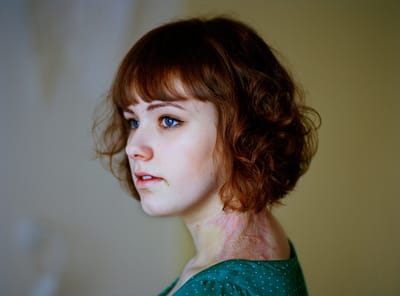
Andrea Gjestvang is Norwegian photographer. Her work explores contemporary social issues within the Northern hemisphere. Her work has also been described to have “a strong political view on the social and anthropological issues related to globalization, identity and cultural uniqueness”. One of most famous series of work that received outstanding recognition and which she also received a grant for was the series of images ‘One day in history’. This series was based on a bombing which took place in Oslo, killing a total of eight people. She made it her mission to travel around the country photographing survivors of the attack. The 48 portraits created displayed the extent of the attack on these individuals, showing them to have scars and injuries; both mental as well as physical. I am especially drawn to the work that Gjestvang creates because of how each of her projects tells a story with the use of text to accompany her images, allowing her audience to connect with the image and fully immerse themselves into the topic that is being discussed as well as the individual that us being photographed.
Technicalities of the first shoot



Equipment- 1 x tripod, 1 x Canon DSLR 700d camera with canon 18-55mm lens, 1 x backdrop stand with black backdrop and clips, Props, Natural lighting.
As this was my first shoot for this new project, having had to start from the beginning, I was pleased with what I had accomplished. I had managed to include text within my images, had began to include some poses and facial expressions and had managed to get a black and white affect within my images. However, when looking back on my images there were certain areas that I felt needed changing and improving, for example I felt that by having the chair in the image this took the focus away from the model, it also meant that it was restricting me from fully using the space around me. These are the things that I needed to consider when undertaking my next shoot.
As this was my first shoot for this new project, having had to start from the beginning, I was pleased with what I had accomplished. I had managed to include text within my images, had began to include some poses and facial expressions and had managed to get a black and white affect within my images. However, when looking back on my images there were certain areas that I felt needed changing and improving, for example I felt that by having the chair in the image this took the focus away from the model, it also meant that it was restricting me from fully using the space around me. These are the things that I needed to consider when undertaking my next shoot.
Technicalities of the second shoot



Equipment- 1 x tripod, 1 x Canon DSLR 700d camera with canon 18-55mm lens, 1 x backdrop stand with black backdrop and clips, Props, Natural lighting.
In this series I decided to take the chair away as this then allowed me to use the floor space and would allow me more freedom of movement, I also decided to add in more props that I felt would bring emphasis to my images, as well as working on my facial expressions and poses to bring across emotion to my viewers. When looking back on my images I was especially drawn to my first image of this shoot, and when I showed the series during a crit session it was discussed that this was the strongest of the images.
There was one image that I wasn't very happy with and felt like it didn't match the quality that I was going for in telling the story within this series. I needed to make sure that all of my images were strong and each one was just as poignant as the next, but told the story in a different way from the last.
In this series I decided to take the chair away as this then allowed me to use the floor space and would allow me more freedom of movement, I also decided to add in more props that I felt would bring emphasis to my images, as well as working on my facial expressions and poses to bring across emotion to my viewers. When looking back on my images I was especially drawn to my first image of this shoot, and when I showed the series during a crit session it was discussed that this was the strongest of the images.
There was one image that I wasn't very happy with and felt like it didn't match the quality that I was going for in telling the story within this series. I needed to make sure that all of my images were strong and each one was just as poignant as the next, but told the story in a different way from the last.
Tutorial with Paul fieldsend-danks



On Friday the 1st of May I had a tutorial with Paul Fieldsend-Danks at 12:20pm. During this tutorial we were looking at my most recent photo shoot that I had undertaken, around the topic of isolation and the effects that it can have on an individual through the use of self portraiture.
Paul began the tutorial by telling me that he thought my images were really powerful. He went on to discuss how he doesn't know me very well, but at the same time this didn't matter because when using images as a narrative the audience doesn't actually need to know the artist, instead the images should speak for themselves.
We also discussed ideas such as how open can and should the questions be that I am asking within the images - ambivalence.
Also the use of gaze within an image. If you as the model are to look directly at the camera as if you are looking straight at your audience then this almost has an affect of drawing the audience away, and can cause the audience to feel uncomfortable when looking at the image. Taking away that gaze will encourage individuals to look at the image, and are more likely to connect with the image more than they would if the model was to be looking straight at the camera.
Some technical areas that Paul gave me to think about was the idea of instead of using A4 pieces of paper, to instead just use scraps of paper and to hand write the question on each piece, similar to what Bob Dylan had done in his music video - 'subterranean homesick blues', and the same as Cindy Sherman did in her project 'Signs that say what you want them to say and not signs that say what someone else wants you to say'.
He also discussed the importance of placing within an image, including ideas such as the placement of the model or even the text, he then went on to discuss the idea of balancing within an image and also the possible use of a square format for the images, this links in to what Louise Fargo-Ruskin discussed in my tutorial with her about the use of cropping, in order to not showing everything within the image.
Paul then concluded by talking about the use of opening my project more to the audience, this can be as simple of rephrasing the question that I am asking within my images, so instead of it saying 'I don't know what I am doing anymore!', It could instead read as 'Do any of us know what we are doing anymore?'
Paul also gave me some artists to have a look at including:
Paul began the tutorial by telling me that he thought my images were really powerful. He went on to discuss how he doesn't know me very well, but at the same time this didn't matter because when using images as a narrative the audience doesn't actually need to know the artist, instead the images should speak for themselves.
We also discussed ideas such as how open can and should the questions be that I am asking within the images - ambivalence.
Also the use of gaze within an image. If you as the model are to look directly at the camera as if you are looking straight at your audience then this almost has an affect of drawing the audience away, and can cause the audience to feel uncomfortable when looking at the image. Taking away that gaze will encourage individuals to look at the image, and are more likely to connect with the image more than they would if the model was to be looking straight at the camera.
Some technical areas that Paul gave me to think about was the idea of instead of using A4 pieces of paper, to instead just use scraps of paper and to hand write the question on each piece, similar to what Bob Dylan had done in his music video - 'subterranean homesick blues', and the same as Cindy Sherman did in her project 'Signs that say what you want them to say and not signs that say what someone else wants you to say'.
He also discussed the importance of placing within an image, including ideas such as the placement of the model or even the text, he then went on to discuss the idea of balancing within an image and also the possible use of a square format for the images, this links in to what Louise Fargo-Ruskin discussed in my tutorial with her about the use of cropping, in order to not showing everything within the image.
Paul then concluded by talking about the use of opening my project more to the audience, this can be as simple of rephrasing the question that I am asking within my images, so instead of it saying 'I don't know what I am doing anymore!', It could instead read as 'Do any of us know what we are doing anymore?'
Paul also gave me some artists to have a look at including:
- Sam Taylor-Wood - His earlier work
- Francesca Woodman
Technicalities of the third shoot



Equipment- 1 x tripod, 1 x Canon DSLR 700d camera with canon 18-55mm lens, 1 x backdrop stand with black backdrop and clips, Props, Natural lighting.
Before undertaking my third shoot I had attended a class crit session and also had a 1:1 tutorial with Paul Fieldsend-Danks, during this tutorial I showed him my second series of images from the project and talked about some of the artists, including Gillian Wearing, that had inspired me to create the work that I had. The feedback that I received from this session was that he thought my images were really powerful. He also discussed the importance of images as a narrative and how the audience doesn't actually need to know the artist, instead the images should speak for themselves. He also discussed the use of open ended questions, opening it up to the audience, allowing them to be a part of the project just by the way that you have phrased the question.
He also gave me advice of the use of gaze within in an image (something that I had actually looked at during my dissertation) he told me that if you as the model are to look directly at the camera then this almost has an affect of drawing the audience away, and can cause the audience to feel uncomfortable when looking at the image. Taking away that gaze will encourage individuals to look at the image, and are more likely to connect with the image more than they would if the model was to be looking straight at the camera.
He also gave me some technical pointers including the use of scraps of paper instead of the more regimented A4 pieces of clean white paper that I had been using and to hand write the question on each piece, similar to what Bob Dylan had done in his music video - 'subterranean homesick blues', and the same as Cindy Sherman did in her project 'Signs that say what you want them to say and not signs that say what someone else wants you to say'.
When it came to shooting my third series of images I took on board all of the advice that I had been given and was really pleased with the outcome that I had achieved. I felt that by also cropping the images this added more emphasis and focus to what I was trying to show to my audience.
Before undertaking my third shoot I had attended a class crit session and also had a 1:1 tutorial with Paul Fieldsend-Danks, during this tutorial I showed him my second series of images from the project and talked about some of the artists, including Gillian Wearing, that had inspired me to create the work that I had. The feedback that I received from this session was that he thought my images were really powerful. He also discussed the importance of images as a narrative and how the audience doesn't actually need to know the artist, instead the images should speak for themselves. He also discussed the use of open ended questions, opening it up to the audience, allowing them to be a part of the project just by the way that you have phrased the question.
He also gave me advice of the use of gaze within in an image (something that I had actually looked at during my dissertation) he told me that if you as the model are to look directly at the camera then this almost has an affect of drawing the audience away, and can cause the audience to feel uncomfortable when looking at the image. Taking away that gaze will encourage individuals to look at the image, and are more likely to connect with the image more than they would if the model was to be looking straight at the camera.
He also gave me some technical pointers including the use of scraps of paper instead of the more regimented A4 pieces of clean white paper that I had been using and to hand write the question on each piece, similar to what Bob Dylan had done in his music video - 'subterranean homesick blues', and the same as Cindy Sherman did in her project 'Signs that say what you want them to say and not signs that say what someone else wants you to say'.
When it came to shooting my third series of images I took on board all of the advice that I had been given and was really pleased with the outcome that I had achieved. I felt that by also cropping the images this added more emphasis and focus to what I was trying to show to my audience.
Bibliography
Online Journal-
Online articles-
- Malik, S. and Naeem, K., 2020. Impact of COVID-19 Pandemic on Women: Health, livelihoods & domestic violence, [online] p.2. Available at: [Accessed 20 May 2020].
Online articles-
- Author Unknown. One in 20 lose job over coronavirus as only eight per cent say public taking threat seriously. 2020. The Independent. Available at: https://www.independent.co.uk/news/uk/home-news/coronavirus-latest-job-loss-hours-poll-yougov-boris-johnson-self-isolation-a9422971.html [Accessed 20th March 2020]
- Author Unknown. Coronavirus: Boris Johnson puts UK in lockdown as death tolls reaches 55. 2020. Telegraph.co.uk. Available at: https://www.telegraph.co.uk/global-health/science-and-disease/coronavirus-news-uk-latest-update-covid-19-death-toll-cases/ [Accessed 20th March 2020]
- Author Unknown. How many confirmed cases are there in your area?. 2020. BBC News. https://www.bbc.co.uk/news/uk-51768274. [Accessed 20th March 2020]
- Author Unknown. Britain should be taking coronavirus more seriously | Letters. 2020. the Guardian. Available at: https://www.theguardian.com/world/2020/feb/25/britain-should-be-taking-coronavirus-more-seriously. [Accessed 20th March 2020]
- Author unknown. About - Photographer Andrea Gjestvang. Date of publication unknown. Photographer Andrea Gjestvang. Available at: https://www.andreagjestvang.com/about. [Accessed 30th March 2020]
- Author Unknown. Jo Spence 1934–1992 | Tate. Date of publication unknown. Tate. Available at: https://www.tate.org.uk/art/artists/jo-spence-18272. [Accessed 5th May 2020]
- Author Unknown. Gillian Wearing CBE born 1963 | Tate. Date of publication unknown. Tate. Available at: https://www.tate.org.uk/art/artists/gillian-wearing-cbe-2648. [Accessed 5th May 2020]
- Author Unknown. Dorothea Lange. 2020. Biography. Available at: https://www.biography.com/artist/dorothea-lange. [Accessed 5th May 2020]
- Chiara Fiorillo. Chaos as shelves 'cleared like a riot' as shoppers mass buy in coronavirus panic. 2020. mirror. Available at: https://www.mirror.co.uk/news/uk-news/coronavirus-chaos-shelves-cleared-like-21692174. [Accessed 20th March 2020]
- Emily Hodgkin. Toilet paper shortage: UK supermarkets to ration product due to coronavirus stockpiling?. 2020. Express.co.uk. https://www.express.co.uk/life-style/life/1250651/Toilet-paper-shortage-UK-coronavirus. [Accessed 20th March 2020]
- Josh White. Who is on the list of key workers?. 2020. The Telegraph. Available at: https://www.telegraph.co.uk/news/0/key-essential-workers-uk/ [Accessed 20th March 2020]
Video created of book
Exposure lecture with Louise Fargo-Ruskin

"Artists need to understand how to evaluate opportunities for themselves to make informed decisions about the kind of opportunities they encounter" (Artquest)
Task-
Search out a past artist residency /commission/exhibition that you find particularly interesting and be ready to share 3 slides with the group on the following next week: (The artist, The organisation and The work)
- Positioning - Where will you fit within contemporary art practice?
- Readiness - Pace yourself/ Don't burn yourself out.
- Cost effective - Deciding which competitions are worth spending money on.
- Timing - It might not be your time --> Galleries/curators may be looking for particular work at that time and your work doesn't fit into that category, but may do at another point in time.
- Relationship - Who you are going to be working with and spend time on building that relationship.
- Temperament
- Strategy - e.g. 5 and 10 year plans.
- Residencies - Gives you time to focus and develop your practice / Sometimes they provide financial support / Sometimes it can be provided with a studio space. Each residency differs from each other.
- Exhibitions/screenings - When any public platform shows your work, you increase your visibility, build relationships with other artists and professionals and build an audience for your work.
- Exercise caution!
- Do you research - What are others views, for example of competitions.
- Things to expect - A number of galleries, particularly those that are publicly funded will pay artists to exhibit their work, this can be an important investment into your work.
- Communicate - Make sure you get an agreement in writing when working with organisations in order to make sure that you are covered if anything should go wrong whilst you are working either with them or for them.
- Prizes and awards
- Commissions - An opportunity to create new work, will most likely involve some sort of specification.
- Have I applied before I know what is being asked of me?
- Is the opportunity suitable for my practice?
- Make sure an opportunity is 'Suitable' for your practice!
- Is it what I need at this stage of my career?
- Do I need to contact the organizers with any questions?
Task-
Search out a past artist residency /commission/exhibition that you find particularly interesting and be ready to share 3 slides with the group on the following next week: (The artist, The organisation and The work)
Mini project task


On Monday the 27th of April we were set the task to create a Visual mini project, this task required us to find a photographer who has responded to 'isolation', during the current global pandemic or previously. Try making an image/series in response to/inspired by this work . Upload the image/s (with your name) to the attached Google Jam board document so we can look at these this afternoon. It might be useful to include the image that has inspired you, as well as your image.
For this project I carried out my research online, with the theme of reflection. This is when I came across Pol Ubeda Hervas, a photographer from Barcelona. His work was inspired by changes within his life that left him unsure of who is he. In each of his series of images he decided to leave the shoes as a reminder that there was still some personality there.
I was inspired by this image in particular out of his series of images, purely for the fact that it displayed reflection within it. I began finding objects that I could see my reflection within and taking pictures. I decided to use a black and white filter within my images because I felt that it added a certain quality to the images, and helped to display the emotional theme that I was going for within my mini series. I have decided to display my own image next to the artists because this is the image that was the most similar to their own work and was the image that was the most liked when we presented our mini project to our tutors and class.
For this project I carried out my research online, with the theme of reflection. This is when I came across Pol Ubeda Hervas, a photographer from Barcelona. His work was inspired by changes within his life that left him unsure of who is he. In each of his series of images he decided to leave the shoes as a reminder that there was still some personality there.
I was inspired by this image in particular out of his series of images, purely for the fact that it displayed reflection within it. I began finding objects that I could see my reflection within and taking pictures. I decided to use a black and white filter within my images because I felt that it added a certain quality to the images, and helped to display the emotional theme that I was going for within my mini series. I have decided to display my own image next to the artists because this is the image that was the most similar to their own work and was the image that was the most liked when we presented our mini project to our tutors and class.
Artist residency task


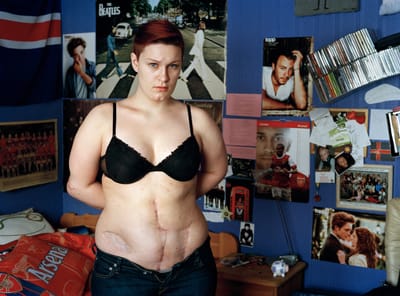
Task-
Search out a past artist residency /commission/exhibition that you find particularly interesting and be ready to share 3 slides with the group on the following next week: (The artist, The organisation and The work)
The Artist - Andrea Gjestvang-
Andrea is Norwegian photographer. Her work explores contemporary social issues within the Northern hemisphere. Her work has also been described to have “a strong political view on the social and anthropological issues related to globalization, identity and cultural uniqueness”. (https://webneel.com/famous-photographers-2)
Her work has gained her international recognition, exhibitions and awards, including ‘Sony World Photography Awards Photographer of the Year 2013’.
The organisation - ‘Norwegian Freedom of Speech Foundation’-
The ‘Norwegian Freedom of speech Foundation’ is an initiative that was brought in to promote freedom of expression and independent media.
Through being awarded a grant by this foundation and several other companies this has allowed Andrea to act as an advocate for the individuals that she photographs and the themes that she explores.
One of her most famous series of work that received outstanding recognition and which she also received a grant for was the series of images ‘One day in history’. This series was based on a bombing which took place in Oslo, killing a total of eight people. She made it her mission to travel around the country photographing survivors of the attack. The 48 portraits created displayed the extent of the attack on these individuals, showing them to have scars and injuries; both mental as well as physical.
Search out a past artist residency /commission/exhibition that you find particularly interesting and be ready to share 3 slides with the group on the following next week: (The artist, The organisation and The work)
The Artist - Andrea Gjestvang-
Andrea is Norwegian photographer. Her work explores contemporary social issues within the Northern hemisphere. Her work has also been described to have “a strong political view on the social and anthropological issues related to globalization, identity and cultural uniqueness”. (https://webneel.com/famous-photographers-2)
Her work has gained her international recognition, exhibitions and awards, including ‘Sony World Photography Awards Photographer of the Year 2013’.
The organisation - ‘Norwegian Freedom of Speech Foundation’-
The ‘Norwegian Freedom of speech Foundation’ is an initiative that was brought in to promote freedom of expression and independent media.
Through being awarded a grant by this foundation and several other companies this has allowed Andrea to act as an advocate for the individuals that she photographs and the themes that she explores.
One of her most famous series of work that received outstanding recognition and which she also received a grant for was the series of images ‘One day in history’. This series was based on a bombing which took place in Oslo, killing a total of eight people. She made it her mission to travel around the country photographing survivors of the attack. The 48 portraits created displayed the extent of the attack on these individuals, showing them to have scars and injuries; both mental as well as physical.
Artist statement
Photography has always been a passion of mine, even when I was a small child. Photography is my way of being able to tell a story to my audience through the use of narrative pieces, whether these stories be made of up themes that are personal, fictional or even sometimes political. Photography gives you the ability to be who you want to be and to say what you want to say without having to put it into words. As an artist I would best describe my work as meaningful; how can you expect your audience to have a connection with your work if the work that you have created means nothing to you as the artist that imagined, designed and created it. Within every project that I undertake and every photo I ‘create’ I always fully give myself to the project, so that we become as one, so that I am able to tell the story as fully and as truthfully as possible. My main aim in every piece of work that I create is for someone to look at the work and feel a connection to it in the same way that I do. I often find myself connecting with themes such as mental health; more specifically anxiety and depression, something that is very personal to me, and often interlinking it in some way with nature, and using it as a narrative within my work. Nature is often an area that I use as a form of escapism from the harsh reality that we live in, being able to create a world that allows you to feel more at ease.
3-5 year plan
Year 3-
In three years from now, I would like to have my own home, with the possibility of starting my own family. I would have liked to have continued building my portfolio, both online and physical so that I have something to show to potential employers. I imagine starting out small and doing some photography work alongside my full time job, still allowing me to build connections, and get my name and my work out there.
Year 5-
In five years from now I would like to have an up and running business in photography that specialises in mixed events, small functions as well as running my own online store. I would like to specialise my work in nature photography, but am also interested in working with people doing photography for birthday parties, as well as working with organisations and taking photographs for them.
Why are these goals important to you?
These are important because it is the progression that I would like to be making within my professional life.
What will be different in you when you achieve these goals?
I will have fulfilled my dreams and ambitions allowing me to do what I want and earn a living from this as well.
What is your deadline for achieving these goals?
Intiially I would have said five years is the maximum, but with me getting older and having ambitions outside of my photography I would have to say within the next five to ten years I hope to achieve all of my goals.
In three years from now, I would like to have my own home, with the possibility of starting my own family. I would have liked to have continued building my portfolio, both online and physical so that I have something to show to potential employers. I imagine starting out small and doing some photography work alongside my full time job, still allowing me to build connections, and get my name and my work out there.
Year 5-
In five years from now I would like to have an up and running business in photography that specialises in mixed events, small functions as well as running my own online store. I would like to specialise my work in nature photography, but am also interested in working with people doing photography for birthday parties, as well as working with organisations and taking photographs for them.
Why are these goals important to you?
These are important because it is the progression that I would like to be making within my professional life.
What will be different in you when you achieve these goals?
I will have fulfilled my dreams and ambitions allowing me to do what I want and earn a living from this as well.
What is your deadline for achieving these goals?
Intiially I would have said five years is the maximum, but with me getting older and having ambitions outside of my photography I would have to say within the next five to ten years I hope to achieve all of my goals.








